pg. 20

Exploring how an athlete’s menstrual cycle affects their performance

Editors-in-Chief
Owen Bittinger, Elizabeth Fetter
Jackson Martin, Cameron Toland
Creative Director
Grace Li
Multimedia Director
Oliver Marburg
Business Manager
Hillary Studdert
Head Columnist
JJ Stoen
Online Editor-in-Chief

Ivan Ijzerman
Managing/Copy Editors
Yasmin Friedrichowitz
Grace Gormley
Social Media Managers
Trey Collins, Josie Vogel
Photo Editor
Caleb Wong
Staff Writers
Aspen Stitt
Caroline Mostofizadeh
Eliza Gaither
Jason Hu, Katie Yen
Sirisha Mitra
Takumi Weiman, Tyler Frick
Tyler Harrison, Tyler Martin
Tyler Wong
Volume XVI, Issue 2 December 2022
STAFF
Viking Magazine Palo Alto High School 50 Embarcadero Road Palo Alto, CA 94301 650-329-3837 Email contact: vikingeds@gmail.com Follow us @vikingsportsmag or go to vikingsportsmag.com for current game updates/scores. Viking, a sports magazine published by the students in Palo Alto High School’s Advanced Magazine Journalism class, is an open forum for student expression and the discussion of issues of concern to its readership. Viking is distributed to its readers and the student body at no cost. The staff welcomes letters to the editor, but reserves the right to edit all submissions for length, grammar, potential libel, invasion of privacy and obscenity. Advertising in Viking The staff publishes advertisements with signed contracts providing they are not deemed by the staff inappropriate for the magazine’s audience. For more information about advertising with Viking, please contact Viking by email at vikingeds@gmail.com Printing Services 2,500 copies of The Viking are printed, five times a year by Folger Graphics in Hayward, Calif. Logo Font Courtesy of Måns Grebäck The Chu Family Tania Nanevicz The Martin Family The Toland Family The Marburg Family The Woodworth Family would like to thank our sponsors... The Mostofizadeh Family Mollie Stitt The Gaither Family The Studdert Family The Li Family The Harrison Family
Our feature story, “Menstruation Situation” (pg. 20), highlights how the common menstrual cycle constructs multiple obstacles for many athletes around the world. (cover by Owen Bittinger and Grace Gormley • art by Elizabeth Fetter)
magazine
on the cover:
Viking
Hey Vikes!
We are so excited to bring you our second issue of Viking this school year. Before we get into it, we want to congratulate all of our fall sports team on a successful season. We saw members of the girls cross country team individually place 5th, 6th, and 7th at the state meet, the boy water polo won league and made it to the open division of CCS and the Football team brought home the first CCS Trophy since 2010. We’re so proud of everyone and can’t wait to see what comes next in the upcoming winter season! Be sure to check out “Senior Night Traditions: Fall Edition” on page 26 highlights the ceremonies used to honor senior athletes’ final season in a sport.
Across the athletic community, people rarely discuss the athletic impacts of
having a period. Our cover story, “The Menstruation Situation” (pg. 20), outlines the physical and mental impacts athletes with periods face as a result of having a menstrual cycle.
Did you know that Paly has an ice hockey team? Few Paly students do. “On The Rink” (pg. 15), highlights this team and spreads awareness to the Paly community about this “hidden” team.
winter Olympics combines shooting a ri fle and skiing. Our second feature story, “Breaking Boundaries: Biathlon,” profiles sophomore Megan Lamoine and her ex perience competing in this niche event.
their choice of shoes; whether is a fash ion choice or a functionality decision. “Paly Kicks,” on page 41, highlights one
STAFF OPINION




Qatar World Cup
The World Cup takes center stage in the sports world once every four years. This year, that stage is in Qatar, a unique host for several reasons. First, this Middle Eastern country on the Persian Gulf is very small in size (a bit smaller than the state of Connecticut) has a population of 3 million, which is less populous than Los Angeles. Second, this country has no soccer history or culture to speak of, making the selection of Qatar as the World Cup host by the international body which governs soccer, FIFA, a curious one. Third, the World Cup is normally played in June and July – the off-season for the elite world soccer leagues like the Premier League and the Bundesliga – but that is not possible in Qatar, where the temperature routinely approaches 110 degrees in the summer months. Thus, this World Cup is being played in the winter.
All of these unique factors raised questions by many as to whether Qatar could
pull off being the host of such an iconic world sporting event.
Qatar, hoping to be up to the task, spared no expense (except one noted below). Qatar reportedly spent $220 billion to build the facilities and amenities needed to host the games and the tens of thousands of fans descending on this little Arabian country. (Qatar’s spending crushed the previous World Cup host spending record of $15 billion set by Brazil in 2014). Judging from the television screen, it appears Qatar has done a fine job - the stadiums where the matches are played are presentable, and the neighboring facilities seem well-suited to meet the needs of the thousands of fans rooting on their teams. But behind this idealistic scene, there is controversy surrounding Qatar’s hosting of these games - most notably the treatment of the workers who built all the facilities. A statistic from the Guardian reports that 400-500 migrant workers died on the job
athlete in every Paly sport and gives detail about their choice of shoe.
Athletes often find themselves in a situation where they have lost love for their sport, and it is more common than many realize. Our final feature, Burnout: When more is not better, dives into this crucial issue on page 36. Multimedia director Oliver Marburg has been hard at work publishing Viking’s podcast, “Vikes on Mics!” Marburg brings on a new co-host for each episode, so be sure to check out the newest episodes on Spotify! Well that’s about it vikes, we hope you enjoy what we have brought to you this issue, and as always… Sko Vikes!
working on various World Cup projects, and Qatar has in many instances failed to compensate these families for their loss. FIFA, as a worldwide body, should pressure Qatar to make amends for these astonishing human rights violations, but FIFA remains silent.
It is clear that even one World Cup migrant worker death is too many, let alone the hundreds of deaths reported. At minimum, Qatar should spend a little more on the World Cup and compensate those who lost family members working to help Qatar get ready for the World Cup. Despite how pristine the games may appear on TV, the screen does not fully capture the more harsh reality of Qatar as World Cup host.
-Viking
@vikingsportsmag | DECEMBER 2022 | 3 Letter from the EDITORS
4 | VIKING MAGAZINE | vikingsportsmag.com TABLE OF CONTENTS 6 12 15 18 20 26 34 36 28 ZOOMS INTRO PACKAGE ON THE RINK AFTER HOURS THE MENSTUATION SITUATION SENIOR NIGHT BREAKING BOUNDARIES: BIATAHLON NIL BURNOUT: WHEN MORE ISN’T BETTER 41 PALY KICKS 44 VIKING TRIES: THE DRIVING RANGE 47 FINAL WORD
ISSUE 2



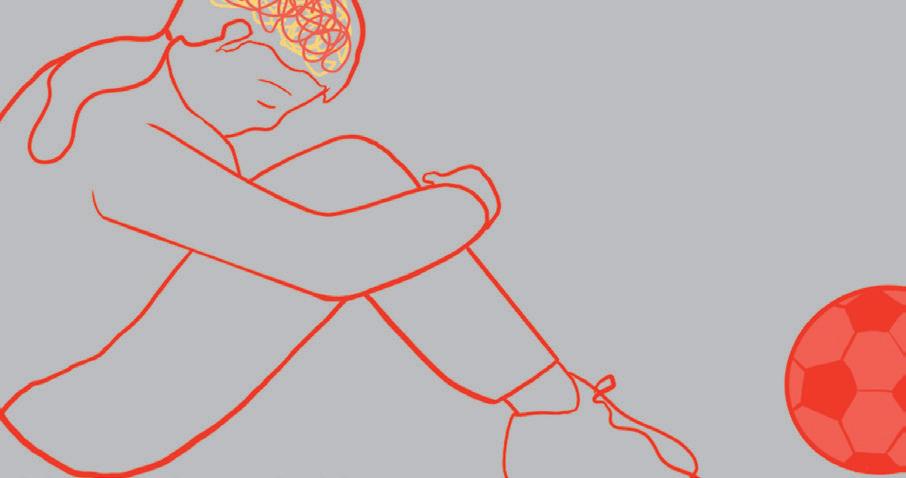
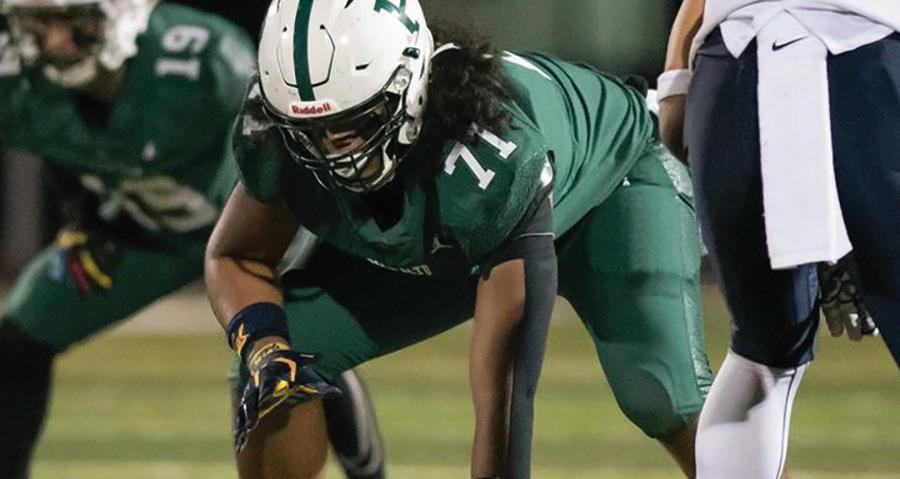



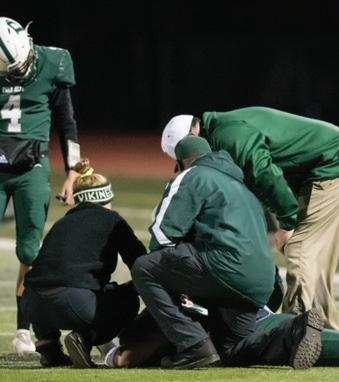

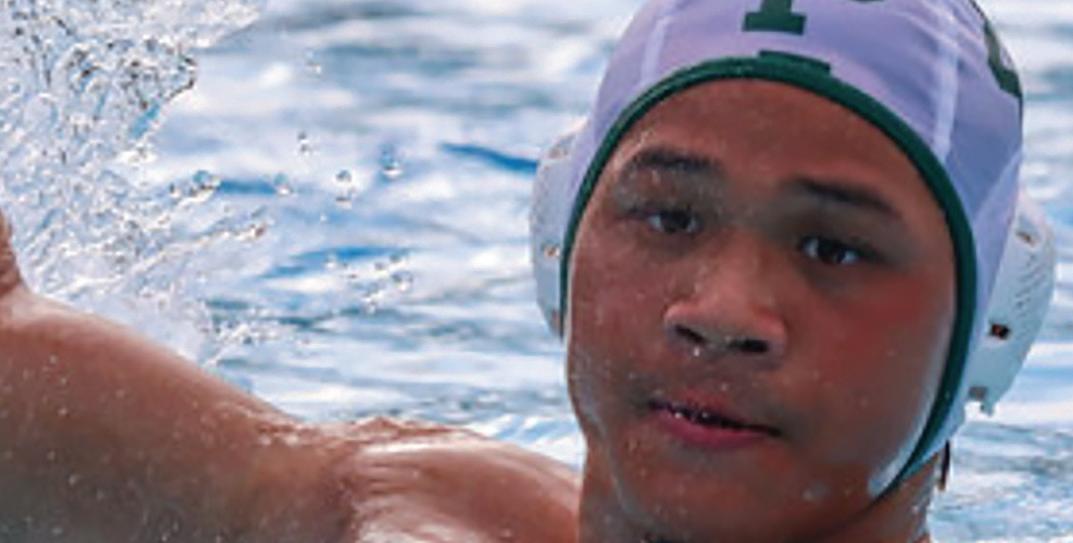
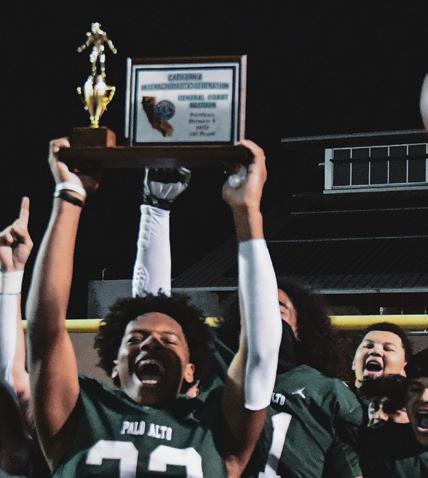
@vikingsportsmag | DECEMBER 2022 | 5
design by OWEN BITTINGER
BACK HOME
Paly football defeated Monterey 27-24, becoming CCS champions for the first time in 12 years. “As time went by, we were able to communicate and help each other out on the field,” Jason Auzenne (‘24) said. “As you can see, the results are great.” Pictured: Auzenne lifts the trophy after the team’s win.

WELCOME
Photo by Tyler Wong

 Photo by Caleb Wong
Photo by Caleb Wong
GUNNIN’
IT THRU THE FINISH
Paly boys cross country finished first at the third SCVAL race at Baylands Park in Sunnyvale. “It felt very good to work as a team and all of my teammates were very supportive throughout the meet,” junior Tony Mckenna said. Pictured: Neddie Kiessling (‘24), Owen Bittinger (‘23), and Mckenna during the last stretch of the race.

SENIORS
OF 2023
Paly girls volleyball beat Monta Vista 3-2, completing the reverse sweep on senior night. “I am incredibly proud to be able to pull off that win,” senior Evie Kramer said. Pictured: Kramer fools the opposition using a feint to score.
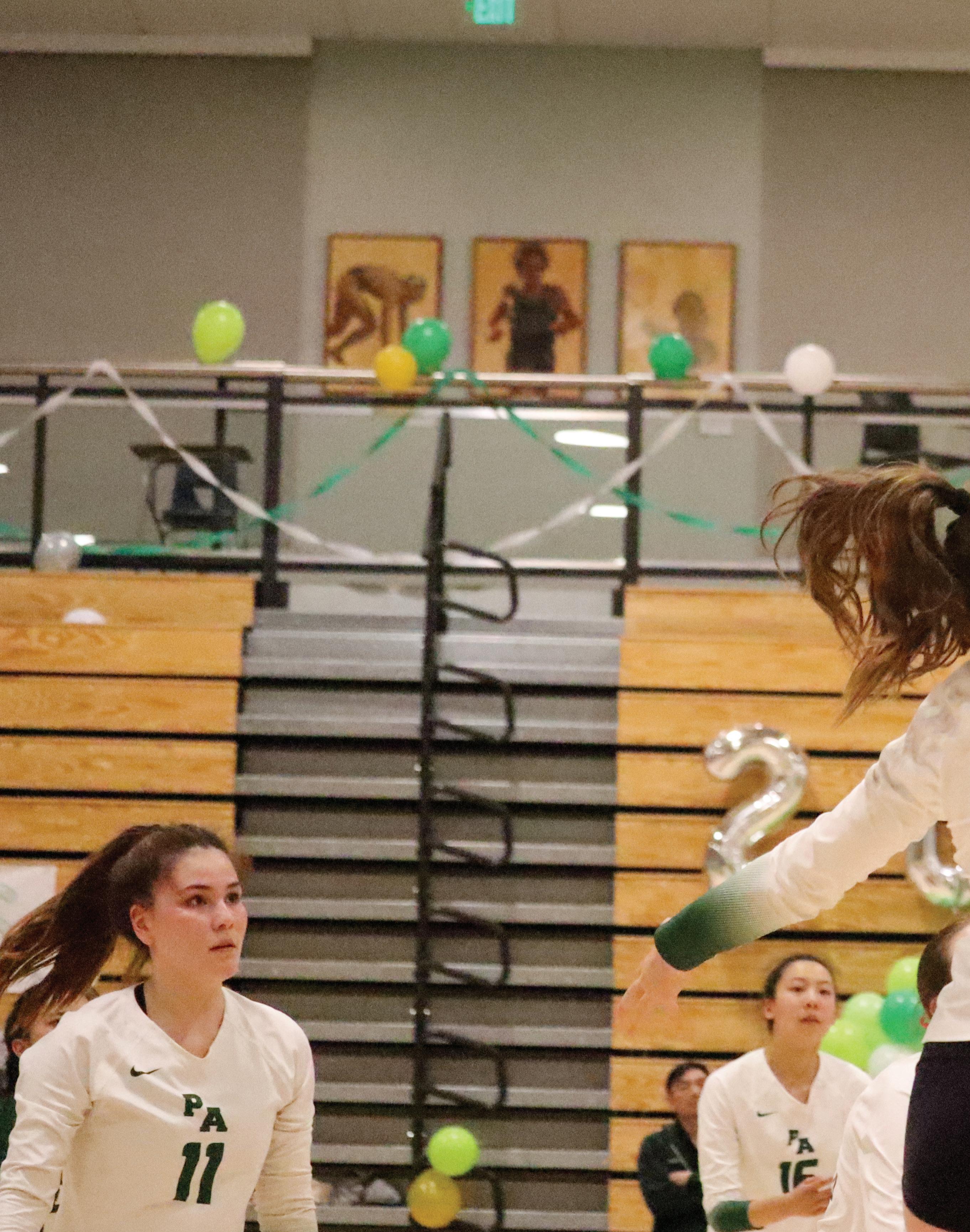
 Photo by Caleb Wong
Photo by Caleb Wong
If You Ain't Last, You're First: Paly's Worst Fantasy Football Punishments
by Tyler Frick and Tyler Harrison
ROSTER MATCHUP PLAYERS LEAGUE

"sexy" Car Wash
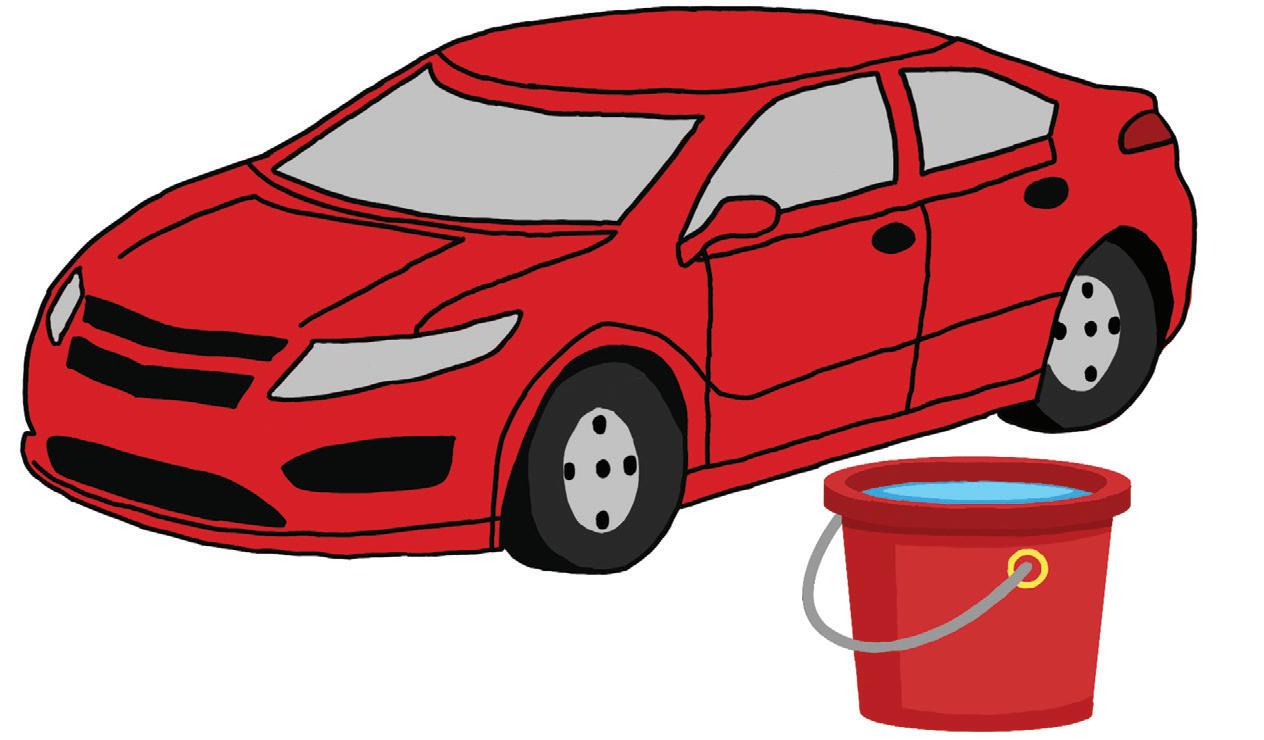
"I think it's going to be super funny because I won't be doing it"
-turner mcfarland ('25)
Spray tan

"I'm not worried. I know my team is going to come in clutch these next two weeks"
-Rocky Leitch ('23)



(Currently in last place)
WITH
STEP ONE
key INGREDIENTS
- spinach
- protein powder

- oat milk
STEP TWO
STEP THREE
Pre-game Smoothie Katherine Stein
- Strawberry - Banana - Apple
gather ingredients Blend for two minutes enjoy!
Paly athlete's pro sport inspirations




"When I found out that [Kobe Bryant] used to wake up at 3 a.m. every day to start his workouts and even took tap dancing lessons to improve his footwork, I just remember thinking 'I want to be just like him.'"

- Natalie Neumann ('25)
"Not only did [Ray Lewis] come from a rough background but he overcame all obstacles and became one of the best linebackers in history."

- Va'inga Mahe ('23)


"Roger Federer has inspired me to be very positive with great sportsmanship on and off court, even during and after some very intense matches."

- Erin Li ('24)
2022 ALL-FALL TEAM
Now that the fall season is over, the All-Fall Team is here to highlight our athletes' excellence on the field, track, and in the pool.

 KELLYN SCHEEL SAMANTHA LEE JEREMIAH MADRIGAL
KINGA CZAJKOWSKA JULIEN CHOW
KELLYN SCHEEL SAMANTHA LEE JEREMIAH MADRIGAL
KINGA CZAJKOWSKA JULIEN CHOW
Answer:

















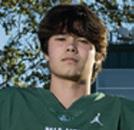

















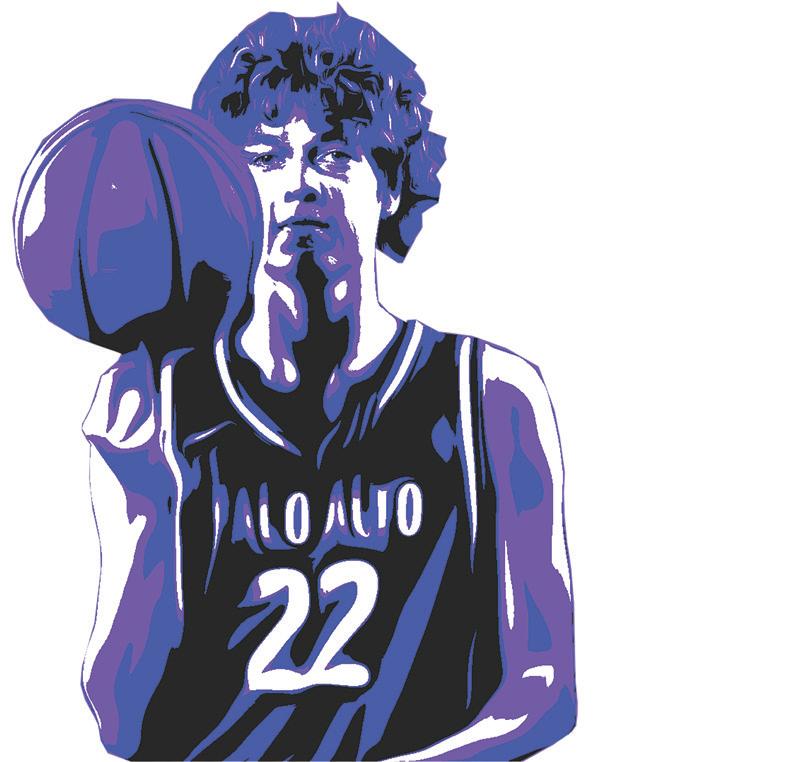
Jack Johnson math
Gyros gyros Ten QuesTions with merT yAnar
Favorite
Favorite arTisT? hidden talenT? does pineA belon pizza? Favorite subJecT? sporT you'd play if you couldn't play basketball? FAVorite resTauranT in palo alTo? Results: MerT yanar ('23) is a capTain and sTarTer on the boys basketball teAm Answer: like Mike Answer: khRis Middleton Answer: steelers Answer: Math Answer: hikinG Answer: PiAno Answer: soccer The sandlot uncle dRew space jam giAnnis anTetokounMpo GiAnnis anTetokounMpo sTeelers steelers The beAtles piAno hisTory yes lulu's giAnnis anTetokounMpo football key: beethoven kendrick lamar piAno science chess bill's cafe hockey Answer: no lulu's volleyball piAno 4/10 3/10 2/10 - rocky leitch (fRiend) - seAn hogan (teAmMate) - brandon byer (asst. coAch)
Answer:
Favorite sporTs movie?
Favorite Pro athlete?
On therink

Breaking the ice about one of Paly’s most unique and unsung sports programs.
that [Paly has] an ice hock ey team, I don’t think I would go to a game,” Owens said. One reason why many Paly students are reluctant to at tend games is because the sport is not oficially affiliated with the school. The team, founded in 2017, functions as a club team with special
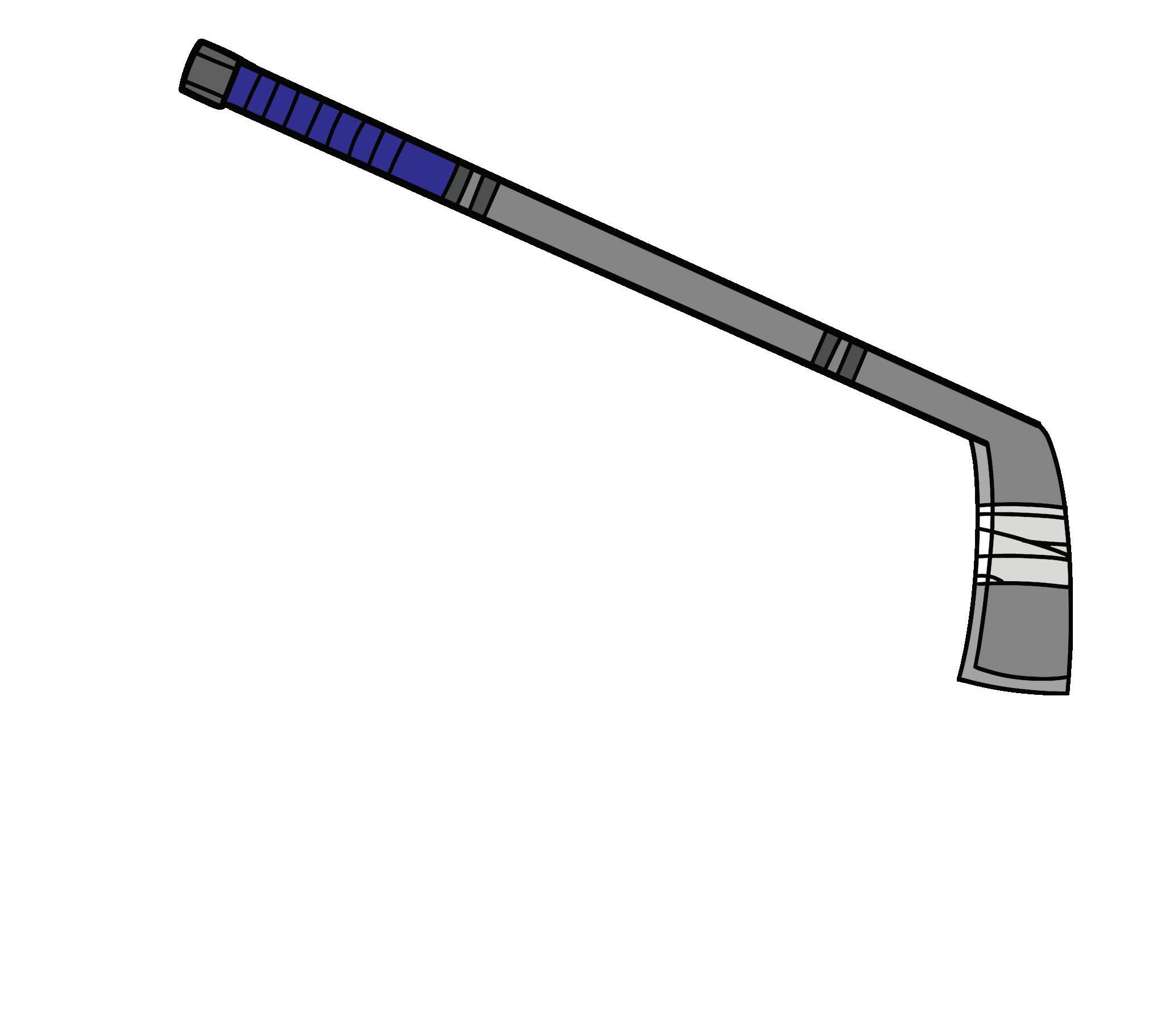

 -Will Hagan (‘25)
-Will Hagan (‘25)
@vikingsportsmag | DECEMBER 2022 | 15
being part of the school but in the future that might be something the team might want to explore.”

Although the lack of school affiliation allows people for other teams to play for “Paly” and does not negatively impact their competition, it does have some drawbacks, mainly the lack of a structured training and competing without proper facilities.
Most high school hockey teams on the East Coast live within commuting distance of a skating rink, or have a rink at their school. Because Paly does not have a rink, and there are no adequate local rinks, the athletes must commute to San Jose to practice, around 30 to 40 minutes away from Palo Alto. Because of the long commute, practices are only held once a week.
Even though team members come from many different areas and schools, and have limited practice, athletes note that the dynamic is still positive and the players are well-connected.
“We were able to build up our chemistry so quickly through practicing together every Wednesday morning and awarding the player of the game with a funny looking viking helmet,” Paly sophomore Henry Harding said. “Overall it’s just a fun time to be able to play hockey with my friends and represent my school while doing it.”
teams results in a smaller league than other high school sports.
The absence of one central or a handful of central rinks in the near area also affects the competition schedule; the competition is far more dependent of the scheduling limitations at the venue. Because of this, games do not operate on a set schedule with some weeks having up to two games while others have none.



This irregular scheduling leads to another drawback: lack of support and recognition. While other sports teams games and competitions are promoted by Paly, encouraging students to come to home games to support their classmates, this rarely happens for the hockey team. A lack of knowledge about the ice
hockey team coupled with a long commute to games means that the stands are often empty, beyond the handful of parents and family friends. The team feels
“I understand that it’s pretty hard for a lot of people to go to our games since they are in San Jose,” Harding said. “I think if everybody collectively decided to show up to one game of ours that would be pretty cool.”
Harding recently created an Instagram account for the team in hopes of increasing the promotion of the team and their games. For those who can’t make it to games in person, the account also posts game recaps so fans can stay up-to-date.
“I created [the account] in order to promote when we have games and the final scores of those games for those who couldn’t watch the game in person,” Harding said.
Beyond spreading awareness about the games, the account also functions to spread awareness about hockey itself.

“I think the main way to grow hockey in California is by creating more exposure.”
16 | VIKING MAGAZINE | vikingsportsmag.com
-Will Hagan (‘25)
As with any relatively new sport, the next step for the hockey team is to continue to add people to its roster. The end goal is to create enough demand to fill a complete Paly roster and function like a traditional high school sport –– school-sanctioned and SCVAL and eventually CCS operated.





“I think the main way to grow hockey in California is by creating more exposure,” Hagan said. “Creating high school leagues and teams really helps expose the sport to a new audience and I think is the best way for hockey to grow.”
A benefit that would ideally come with this increased exposure is the addition of women to the team. Currently, despite being co-ed, the ice hockey team is allmale. Senior Ry Ewen has played on the Paly team since his freshman year, and experiences the lopsided gender split first hand.
“I’ve played against teams with girls on
them but I’ve never had [a girl] as a teammate yet,” Ewen said.

The lack of girls on the team is partially due to a base-line lack of interest. Sophomore Briar Dorogusker has been ice skating for years, but has found it difficult to transfer her skills and habits between sports.
“I was at a birthday party where they had some hockey sticks and playing it was pretty fun,” Dorogusker said. “Then I took a class, which was less fun because we didn’t get to play much and it was mostly drills.”

However, according to various female athletes at Paly, another reason why few girls are looking to be on the team is because of the lack of female pro-hockey teams as well as the social stigma against girls playing hockey. The NHL is the only professional hockey league in the United States, and there are no women’s teams
in this league. Furthermore, according to some Paly female athletes, hockey is typically portrayed as an “aggressive, violent, male-doinated” sport, and women who want to be on the ice are encouraged to figure skate instead. Sophomore swimmer Lucy Zhao agrees.
“If people see that there are only males on a team, women don’t want to join because they don’t want to be the only female,” Zhao said. “Also, seeing women at the professional level playing would inspire young women to want to play.”
In the end, the athletes and on the team hope that as the popularity of the sport increases, they will see a greater diversity of genders represented on their team, along with greater fan attendance, and hopefully one day school and league sanctioning. For now, they will continue to lace up their skates, layer up their gear, and skate their hardest in upcoming matches. Despite not being represented by the Paly, they will fight their hardest to win for it.
public indoor mens ice hockey game
creates original six
“My favorite part about getting to play high school hockey is being able to represent something bigger than just my hockey team and being able to play alongside my classmates,” Hagan said. “It is very exciting being able to represent my school and my community.” in
1980 - USA beats the soviet union in ice hockey during the
2022
- Finland wins the ice hockey winter olympics American player in the NHL
32 teams
Ottawa
“I’ve played against teams with girls but I’ve never had [a girl] as a teammate,”
- Ry Ewen (‘23)
@vikingsportsmag | DECEMBER 2022 | 17
Ice Hockey Fun fact Timeline
by SIRISHA MITRA and ASPEN STITT
AFTER
HOURS
For the first three months of the 2022-23 school year, the EMTs stood in for athletic trainer, Justine Iongi, better known as Ms. E. In what ways have they impacted our student-athletes?
Navy blue shirts, high-speed electric scooters, bright red and white lettering spelling out “EMT.” From August to the end of October, these medical professionals were here whenever an athlete broke a finger on the football field, sprained an ankle during field hockey, or got hit by a water polo ball in the pool. Although the EMTs were only here at Paly for a short time, their impact was notable. But why were they here in the first place? Athletic director Jenny Crane explains the circumstances.
“They were hired because our athletic trainer was out on maternity leave and I tried to find a certified athletic trainer to replace her,” Crane said.
Mrs. E, Paly’s athletic trainer, went out on maternity leave this past year. Because of this, the school hired a group of Emergency Medical Technicians (EMTs) to supervise Paly athletes during games, practices, and events. They started their work after each school day ended, stayed for practices and games, and were on call for any emergency situation that occurred.
The athletic trainer provides comprehensive, in depth treatment, and Mrs. E, as well as Paly’s training room facility, is better equipped to deal with long-term injuries. The EMTs, on the other hand, focus solely on acute injuries and are primed for rapid emergency response.
EMT Jeff Long explains his job.
“We are like having 911 at your field,” Long said. “You’re going to have emergency first responders who are equipped to deal with any and every type of emergency at the sports events, we’re good at what we dow.”
Trainers like Mrs. E focus primarily on preventing and rehabilitating injuries, whereas EMTs provide emergency assistance in dire situations. These first responders are equipped to assist student-athletes with severe injuries in the short term, and a trainer would help with long-term recovery and prevent further accidents.
The fast, emergency treatment that the EMTs perform is vital, but so is helping athletes with long-term injuries. Because of this, Melissa Schulz, an athletic trainer at Agile Fitness, acted as a stand-in trainer. Shultz noted that her job is different than that of the EMTs.
“[Trainers] do a lot more tape injury prevention, assessing injuries, and then helping with their return to the sport after injury, as well as taking extra measures and screening on the field,” Schultz said. “EMTs have more of the emergency response, as far as more familiar with things that might be in an ambulance.”

Both the trainer and the EMTs have had vital roles regarding campus athletics. In Mrs. E’s absence, the EMTs helped many Paly student-athletes with their sports-related injuries. One such athlete is junior Ava Iribarren, who plays field hockey.
“During my field hockey game, I kept
getting hit in my arm with the ball,” Iribarren said. “So much so that my arm continued to shake for almost an hour. Then the EMTs came over and wrapped it. They assessed my injury and it really helped.”
To Iribarren, the EMTs were such a helpful resource that their absence will surely disrupt the flow of Paly’s athletic life.

“I feel like there’s gonna be a little upheaval when they first leave,” Ibibarren said.
Many athletes feel that when the EMTs leave, Paly’s athletic program will be hurt, because it will lose an extra layer of protection. Football player Jason Auzenne touches on how they have specifically helped him and his teammates.
“Thankfully there have never been any severe injuries on the football team this year that have required a lot of help from the EMTs, however in the case of any minor injuries they are always very quick to help,” Auzenne said. “They are always consistent in attending practices and games.”
The EMTs never intended to stay longer than a few months, but Paly students have quickly come to realize the advantage of having their assistance. Their unique familiarity with first-responder medical equipment provides security for athletes facing injuries that need quick treatment as opposed to the trainer’s more sustainable and long-term recovery methods.
“Our scope of practice is very large; we have more medical devices at our disposal,” Long said. “We can do more if somebody gets hurt badly. We provide services for not only the students but also the fans. And the parents and coaches have noticed what we do and think that that would be an awesome service.”
“I feel like there’s gonna be a little upheaval when they first leave,”
art by NATE DONAKER 18 | VIKING MAGAZINE | vikingsportsmag.com
- Ava Iribarren (‘24)
Despite the positive impact they have made on athletes in their few months on campus, extending their presence is not possible because of expense. Keeping the EMTs here would take a toll on the athletic budget.
“I think that there’s definitely a place for them in high school athletics,” Crane said. “It’s just a matter of the fact that we don’t have the funding for it.”

However, since Mrs. E’s maternity leave has ended, and she has returned to campus, the EMTs were let go. Now, Mrs. E will resume her normal duties as the athletic trainer, which mainly constitutes cupping to relieve pain, providing physical therapy exercises for athletes, and helping stretch injured limbs. While her job is not the same as that of a first responder, she provides essential care that many Paly athletes have missed, as well as being a vital part of the Paly athletic program.
Although the EMTs will no longer be helping out at Paly, their job helping young athletes and the general public alike, is certainly not over. EMT Tyler Sergeant provides insight on what they will do after their time at Paly.
“There are talks with other schools, but this company operates like many other EMS companies: we do private events as well,” Sergeant said. “It’s a mix of private events, so that’s what we’re primarily going to be doing afterward,
just continuing with those events and or schools if they take us on.”
If Paly were to receive more athletic funding, the EMTs could be a source of auxiliary care for injured Paly athletes. Athletic Di rector Crane feels their support was valuable at Paly and would be happy to see them back, as an extra safety element in addition to the regular athletic trainer.


“I think it was great to have them on campus and to have them providing that kind of care,” Crane said. “There’s a place for both kinds of care. I think in high school athletics right athletic trainers are like longterm care, rest and recovery whereas the EMTs were trauma care if something happened in a game. Then they could give immediate care, emergency care.”
With Ms. E back at Paly, the EMTs are no longer needed to provide care for students at Paly. While students and staff are sad to see them gone, their contributions have been immense and they have had a lasting effect on many Paly athletes.
@vikingsportsmag | DECEMBER 2022 | 19
Melissa Schultz, Paly’s stand-in trainer, tends to an injured athlete along with other athletic department staff.
menstruation SITUATION
The menstruation SITUATION


Almost two billion people menstruate every month. What challenges do periods present for athletes, and how do they deal with them?
By ELIZA GAITHER, GRACE GORMLEY and HILLARY STUDDERT

Asingle week has a finite number of hours. For students, the challenge is often fitting everything in: Thirty hours of school; Fifty-six hours of sleep; Sometimes 18 or more hours of schoolwork and studying; On top of this, every four weeks, a large proportion of healthy teens spend over one hundred hours straight bleeding. But not from any sort of cut or wound; instead from the natural process of menstruation.
According to UNICEF, around 1.8 billion people on planet Earth have a menstrual cycle. It is regulated by the hormones estrogen and progesterone and typically involves a four-week cycle. During this month, the uterus –– the organ that can house and nourish a fetus –– spends three weeks building up layers of nutritive tissues, which are heavy in blood, for a baby to live on, then one week shedding it out the vaginal canal to start again. During ovulation, an egg is released from the ovaries and travels through the fallopian tubes to the uterus, where it will be housed for three weeks, until the bleeding phase: “menstruation.”
If the egg is not fertilized by a viable sperm during this period of tissue buildup, the last week of the cycle is spent shedding the egg, along with the blood, tissue, and nutrients of the uterus’ lining. See our graphic on the next page to see the cycle over the period of a month.
Most menstruators get their first period around the age of 12 and bleed –– on average–– once a month until menopause, the age when the nautrally occuring reproductive hormones decline to the point where menstruation can no longer be regulated and a baby can no longer be grown. This usually begins around age 50 but can depend on a range of factors such as genetics or environmental stress.
Dealing with often over 100 hours straight of bleeding each month, along with the other physical, mental, and hormonal changes menstruation brings, is a major disruption to the daily life of menstruators. To athletes, however, this disruption is even more pronounced. The
physical effects of menstruation doubly affect athletes by disrupting their performance, and the mental and hormonal effects add even more stress to their already-busy lives.
But despite all the difficulties of being a menstruating athlete, millions of women around the world do it every single day, overcoming mental and physical challenges brought on by their menstrual cycles.
The physical symptoms of a period most often consist of cramps, muscle and joint pains, headaches, and constipation. As one could imagine, many of these symptoms can affect how an athlete feels while exercising. An anonymous senior at Paly is familiar with the painful effects of periods during play.
“A lot of the times I don’t feel like myself when I’m on my period and I feel like I can’t play to the best of my ability,” she said. “It definitely negatively affects me and doesn’t add any positives.”
From a survey conducted of over 100 Paly students, it was revealed that 82% of athletes find that period symptoms affect their athletic performance. One of these many athletes is senior cross country and track athlete Grace Corrigan. The rigorous training required in long distance running, which Corrigan participates in daily, demands a lot of her body.
Whether it is in the workouts or races, being at your best is required for a strong performance, and the menstrual cycle sometimes prevents this from happening.
“I usually get bad cramps at the beginning of my cycle and it hurts just to stand up and walk around school, so running is definitely hard,” Corrigan said.
Senior soccer player Addie McCarter also feels the negative effects of her period while playing.
“During games I just feel like I get dehydrated faster; I’ll get nauseous faster,” she said. “It’s hard to give it your all when you’re in pain.”
Even elite professional athletes feel the effects of their period.
In the 2020 Tokyo Olympics, the marathon runner Lonah Chemtai Salpeter of Israel entered the women’s marathon field with a long list of accolades and recent strong performances. She had won the Tokyo marathon just months before and holds numerous Isreali national records. She was expected to be in contention for a very strong placing in the field of world class athletes.
However, with just a few miles left in the race, her pace dramatically slowed. She quickly dropped from the front pack, and her consistent sub-5:30 mile pace dropped to a slow jog with intermittent walking and breaks. She finished the race in 66th place, with a time of 2:48:31, over 30 minutes slower than her personal best. Later, she attributed this irregular behavior to her devastating period cramps.
“I felt pretty weak and really tired [and my] cramps did not give me a break from the beginning till now,” Salpeter said in a Facebook post. “With 4 km to go, I really could no longer run.
Even with the negative effects of her period, Salpeter was determined to finish.
“Despite being sad and suffering, I decided to still reach the finish line, not to give up,” she said.
Emergency medicine physician Dr. Jodie Craig says that there are some medical methods to help with difficult period symptoms.
“For certain people, [living with their period is] really tough, and they have very painful, prolonged, heavy periods,” she said. “And those are the young women athletes that might use hormonal regulation to help minimize those side effects, like birth control pills, that kind of thing.”
However, hormonal birth control comes with a long list of potential side effects that can harm their athletics, including excess fatigue and weight gain.
“I was recommended hormonal birth
A lot of the times I don’t feel like myself when I’m on my period.
-Anonymous
It’s hard to give it your all when you’re in pain.
@vikingsportsmag | DECEMBER 2022 | 21
- Addie McCarter
control, … but I chose a different medication because I was worried about gaining weight which I think would negatively impact my athletics” anonymous said.
This weight gain can be even more problematic for athletes in weight-regulated sports like wrestling or rowing. Due to the variability in responses to the medication, some wrestlers don’t feel that birth control is an option. Instead, these individuals must face the negative consequences of their heavy period in order not to sacrifice their athletic performance.
For athletes like McCarter and Salpeter, as well as other menstruators, the physical symptoms of having a period negatively impacts their athletics. But for many others, it can be the other way around: their training negatively impacts the physical symptoms of their menstrual cycle.
Female athletes in intense endurance sports, such as swimming and long distance running, commonly suffer from a condition called athletic amenorrhea. Symptoms of Amenorrhea (beyond the absence of regular bleeding) include unusual fatigue during workouts, thin or falling-out hair and brittle nails. Because of a variety of factors –– mainly having low body fat, caused by hormone imbalances, overtraining and underfueling –– the body does not have enough
available nutrients to continue all proper bodily functions. It chooses only the most essential. Thus the period, among other things, is excluded.
Dr. Craig says that this condition occurs for different reasons in different people.
“It tends to be in athletes that are doing a highly aerobic sport, and get down below a certain percentage of body fat and it varies from individual to individual,” she said.
Many female Paly athletes train over 20 hours a week, and their bodies struggle to keep up with this physical demand. Sometimes amenorrhea can be attributed to isolated factors, like low body weight or hormone imbalances, but sometimes it is part of a harmful health condition known as the “female athlete triad.”
This consists of lack of energy due to underfueling (or not eating enough), lack of a regular menstrual cycle, and low bone density. It is a complex condition many female athletes face, whether they are aware of it or not. Because the triad is made up of multiple factors
–– with some often being a struggle to recognize, such as disordered eating leading to underfueling –– it becomes difficult to diagnose. This creates a frustrating effect on performance and mental health, as the athlete remains uninformed about what is happening to their body and why their performance is declining.
On top of this, the “female athlete triad” can be part of a larger condition, called RED-S, or “relative energy deficiency in sport.” This can lead to lasting health effects such as infertility or weaker bones, and irregular periods are often the first sign.
According to a study by the National Athletic Trainers Association, 44% of female high school athletes believe that losing their period is a normal part of their training. This common misconception is extremely harmful to young girls’ health. Senior swimmer Alden Backstrand believes there is not enough discussion surrounding the loss of a period

“I feel like [irregular periods] are just so common in the sport [of swimming] that it’s just overlooked and no one says, ‘oh, this definitely isn’t healthy for most teenage girls,’” she said.
Although some might see losing their period as a convenient phenomena ––it makes you cramp-free, saves money that you would spend on tampons, and relieves the worry about staining your cute white pants –– in reality, it is dangerous and unhealthy, especially for teens whose bodies are developing.
If the human body does not have enough energy to have a period, it means it also does not have enough energy to repair bones, regrow muscle, pump blood, or grow hair and nails. Instead, it is working to simply keep you alive while essentially running on an empty tank. Lacking a period can also cause bone fractures or osteoporosis, headaches, acne, and future infertility (without a period cycle, there is no ovulation, causing troubles with getting pregnant).
Dr. Craig emphasizes the negative effects of losing one’s period.
The more we normalize [discussion around periods,] the more people will be understanding.
22 | VIKING MAGAZINE | vikingsportsmag.com
-Dr. Jodie Craig
“It’s not a great thing if that happens, because it’s probably your body telling you that you’re down to a fat weight that has become unhealthy for your particular body to maintain its normal functions,” she said.
Another anonymous amenorrheic athlete says that the possibility of future infertility is a cause for worry.
“I am concerned because my doctor told me once that if you don’t get a regular period, it could mean you’re infertile,” she said. “I don’t know if that means I’m infertile, but it’s always a bit stressful.”
Beyond worrying about possible infertility, the athlete also notes that underfueling may play a role in her amenorrhea.
“My period could be irregular if I’m not eating enough; I’ve definitely struggled being a female athlete [and] getting enough calories,” she said.
In addition to these internal stressors of worrying about not getting a period, infertility, or underfueling, athletes with uteruses also face numerous external stressors.
For one anonymous source who plays on a co-ed team, being around men who are generally non-menstruators when the athlete is on her period creates a stressful, uncomfortable environment.
“Not only do they not understand, but it was hard enough to get them to see me as a player and not just as a girl,” the
source said. “I know the guys would try to be understanding, but they just don’t understand.”
Periods have been considered “taboo” for a long time, not just around men, but also around other women. Before Title IX In 1972, there was no discussion of periods in sports because women in sports was so rare.
Since then, periods have become less stigmatized, but even today, many menstruators don’t feel comfortable talking about their period openly, especially for athletes with male coaches.

“A while ago I had a coach who was very emotionally closed off, so people definitely did not feel comfortable going up to [him about this subject],” said our second anonymous source.
For athletes with coaches like this one (who is not a Paly coach), it can be tough to feel comfortable in their sports environment when one is on their period.
Fortunately, from a survey of over 100 Paly students, the majority responded
that they did feel their teammates and coaches created a positive environment for those on their period. However, this positive sentiment is not universally felt; around 30% of respondents instead felt that their team was not a friendly environment for periods.
These negative environments can at times deter athletes from asking for a break or a day off, forcing them to play when they’re not at the top of their game, which in itself can be stressful, irritating, and at times, painful.
McCarter feels that having a female coach makes her feel more comfortable asking for a needed rest due to period pains.
“There’s definitely value in having a female coach, because they understand more of [the period issue],” McCarter said. “With a male coach, I think that it is not often taken seriously to take period-related breaks just because of the stigma surrounding periods and menstrual cycles.”
Even with a female coach and a positive environment, McCarter still feels internalized pressure to play through her pain, especially during games, because of the societal stigma around menstruation.
“It’s fine when it’s just practice and you can kind of take it easy a little bit,” she said. “But for games in particular, I feel like I owe something to the team to give it my all, so it’s hard to recognize when to step down, especially when you’re stepping down because of something that’s so stigmatized. You feel like you’re going to be judged for [taking a break] for that reason.”
In addition to stresses surrounding the
There’s definitely value in having a female coach, because they understand more of [the period issue].
@vikingsportsmag | DECEMBER 2022 | 23
-Addie McCarter
team environment and social stigma, menstrual cycles induce stress in many small ways, like the fear of staining while wearing white bottoms for uniforms.
In fact, some women have protested the international tennis tournament Wimbledon, where athletes traditionally wear all-white outfits to play, because of this issue.
British tennis doubles athlete Alicia Barnett addressed the stress of having to play wearing white when she is on her period.
“I do think some traditions could be changed,” she told a news agency. “Having this discussion [about optional dress codes] is just amazing.”
Other professional athletic teams are also taking on this issue. Just a month ago, female soccer players in England began voicing their concerns about wearing white shorts as a part of their soccer uniform. Manchester City, West Bromwich Albion and Stoke City are among the teams who are switching the color of their players’ uniforms to make their playing experience less stressful when they’re on their period.

The captain of the West Bromwich team is grateful for the change, and that her and her team’s concerns are being listened to.
“Representing the club professionally and looking smart in the kit is really important to us,” she said to the Inde-
pendent. ie. “This change will help us to focus on our performance without added concerns or anxiety.”
McCarter, a fellow soccer player, says this accomplishment is a big step in overcoming the stigma surrounding periods.
“Little stuff like that: creating conversation around [periods] and not viewing them as something that’s bad or shameful or embarrassing, is really important,” she said.
Many feel that just because periods being taboo is widespread, doesn’t mean there isn’t something to be done about it.
“It’s something that’s stigmatized by our society and it’s hard to change,” McCarter said. “[But] it’s a learned thing to be uncomfortable around periods, and it’s something we’re not supposed to talk about because it makes people uncomfortable.”
Dr. Craig acknowledges that discussion around periods is crucial.
“The more we normalize a completely normal body function, the more people will be understanding,” she said. “And then hopefully if more people will talk about it, everyone will benefit.”
Professional athletes like Salpeter agree. After the difficult Olympic marathon where she competed on her peri-
od, she hopes to spread more awareness and continue the conversation that athletes suffer from the effects.
“I think we really need to normalise the conversation around being female athletes,” she said in her Facebook post.
Something that is most frequently stigmatized around periods is the emotional changes linked to hormone shifts. Women all around the world are subjected to the ignorant and insulting comment of, “oh, she’s on her period” upon expressions of anger or frustration.
While menstruation does lead to chemical changes in one’s body, they generally don’t create new emotions, they just heighten already existing ones. For this reason, among others, the above comment and similar ones are not only remarkably dismissive of women’s emotions as well as also being baseless as an ‘explanation’ for women acting in ways contrary to what people perceive as normal.
In fact, people without periods have hormone shifts too. According to Healthline, people without uteruses have a peak in testosterone in the morning and a fall in the evenings.
“There are known hormonal fluctuations that can affect your mood… both in men and women, actually,” said Dr. Craig. “Testosterone levels will affect men’s moods, as well as estrogen and progesterone levels in women.”
To end this stigma, it is essential that people are educated about the actual events in a menstrual cycle. Hormones like estrogen and progesterone peak during ovulation. In the phase in the cycle after ovulation, called the luteal phase, both these hormones begin to fall. Then there’s a second smaller peak as progesterone rises, peaks, and then drops again. The rapid rise and fall of all these hormones often affects neurotransmitters in our brains, namely leading to irregular levels of dopamine and serotonin. See our graphic to follow the levels of chemicals.
These irregular levels of hormones can heighten emotions –– namely stress –– in some menstruators.
No one says, ‘oh, this definitely isn’t healthy for most teenage girls.’
24 | VIKING MAGAZINE | vikingsportsmag.com
-Alden Backstrand
But beyond these hormones, Dr. Craig emphasizes that the pain of having a period creates negative feelings and can damage one’s mood as well.
“Less attention is paid to how it affects your mood in the sense that you’re bleeding,” Dr. Craig said. “Especially for really young girls who are getting periods for the first time, [there is] fear or anxiety that comes along with that. Also for a large subset of the population, having your period is painful. … And when you’re in pain, it affects your mood. That’s true even when people are injured or have a headache or have a sore throat. Even the non-hormone based side effects of having your period affect your mood.”
So, female athletes with athletic amenorrhea –– those who should menstruate but are unable to –– worry and stress over health concerns about not getting their period, and athletes who menstruate regularly worry and stress about getting their period; how this will affect performance, how their will tell their coach, what they will wear. Additionally, regular menstruators face the inherent stress that comes from the hormone changes of having a period.
Stress, for both those with amenorrhoea and regular menstruators, is unhealthy. In response to stress, the body can interrupt the release of estrogen and progesterone. For those already menstruating, enough stress can stop a
period, and for those with amenorrhea, stress will be an inhibitor in helping them regain their period.
Thus, both a lack of menstruation and a period itself cause stress. This can in turn lead to a lack of menstruation, which causes more stress, which makes athletes more likely to lose their period. The vicious cycle continues.

But for one’s body, it is best to have a healthy period cycle. If you’re missing your period now due to your sport, there are many ways to return to a normal cycle. You can cut back on the intensity and frequency of your workouts, and make sure to take needed breaks.
Dr. Craig assures athletes that their periods will likely return.
“If you’ve gotten to [a healthy period before your sport], and then you’ve had amenorrhea from exercise, then usually, there’s a really good chance that you’ll get it back after your sport or your high intensity exercise is over,” she said.
The aforementioned swimmer Backstrand also stresses the importance of
listening to your body, especially in her sport.
“Just swimming for hours and hours isn’t going to be that productive,” senior Alden Backstrand said. “You need to sleep and you need to eat, and you need to have a social life and be with your friends. [Irregular periods] shouldn’t be common for girls. To just not get their periods because they’re over exercising is not healthy.”
Even with the stress, anxiety, and stigma that surround the monthly action of shedding the inner lining of the uterus –– or not being able to –– a period can still represent something inspiring. Periods can represent strength and beauty. Periods can represent the empowerment, the resilience, and the power of women, especially female athletes. McCarter takes pride in this.
“I think [periods] are empowering for women because we are in pain and this does suck,” she said. “But we are still able to perform; we still do it.”
Having your period is painful... and when you’re in pain, it affects your mood
@vikingsportsmag | DECEMBER 2022 | 25
-Dr. Jodie Craig
SENIOR NIGHT
by GRACE LI and TREY COLLINS

TRADITIONS:
SENIOR NIGHT TRADITIONS:
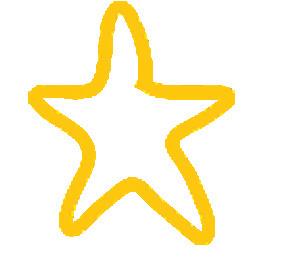
Parents and fellow teammates love to get thoughtful and personal gifts to show their pride and appreciation to the seniors. From new gear to chocolate, seniors are normally bombarded with love through gift-giving on their senior nights.
HEAD POSTERS
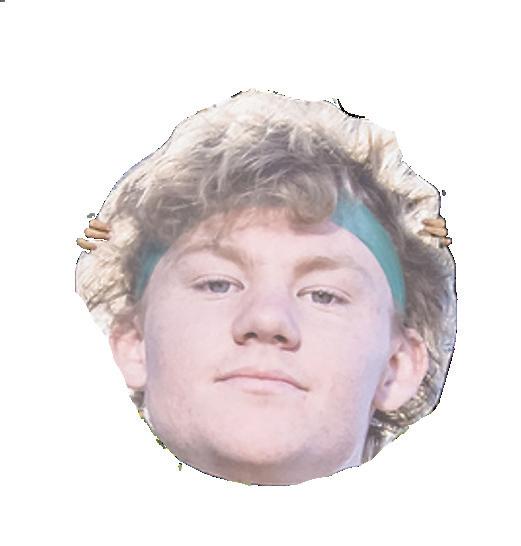

COACH’S SPEECH HEAD POSTERS COACH’S SPEECH

Every year, around late October, huge posters heads of the seniors are hung around the pool, tennis court, and the other sports facilities around campus. A professional photographer takes pictures of all the seniors and they are blown up in these large posters. However, three teams have a different take on senior portraits and make giant foam heads for each of their seniors. Football, dance, and cheer all do this on the last football game of the season.
Linebacker and senior Jack Newman shares his appreciation for the tradition.

“I love having a day dedicated to those who have been through thick and thin for the program— the fat heads are my favorite traditions cause they are just a hilarious way to celebrate the team,” Newman said.
On a competition night like Senior Night, the coaches always make sure to make a speech to celebrate the high school careers of each senior. In water polo, Coach Deke Rowell makes a yearly speech introducing the seniors and giving an inspiring toast about how each one made an impact on the team. Coaches are people to witness each team member’s improvement as the years go on. Watching students grow as athletes over their high school career is an amazing experience for them. Senior Paige Henry shares the importance of the coach’s
“I feel like it’s something that everyone always looks forward to and motivates you to keep going through all four years,” Henry said. “It is something I am always going to remember because it kept me pushing through the season that was most difficult.”




 photo courtesy of Karen Hickey, Malcon Slaney, and Allyson Lee
photo courtesy of Karen Hickey, Malcon Slaney, and Allyson Lee
26 | VIKING MAGAZINE | vikingsportsmag.com
FALL EDITION! gifts gifts






FALL EDITION!
Many teams’ senior nights are planned by the juniors and one of the most common things they do is to make personalized posters. In golf, the juniors decorate each poster for each senior with pictures of each senior during the season and sign a sweet note for their seniors to look back on. After the game, they throw a party with lots of food including pizza, snacks, and a cute golf-themed cake. Some sports are even given some funds in school and depening on the senior class.

In cross country, their gift tradition is an interesting one: socks. Prior to the pandemic, the gifts depended on the number of seniors of the team. In 2019, the senior class size was only 5 to 6 runners so they were given more pricer gifts: hydro flasks and bags of candy. In 2020, the senior class size was very big and due to the pandemic, there were no gifts given. In 2021, the seniors were given socks and it’s been made a tradition for the coming

“Socks… are a much cheaper and useful





option,” varsity runner Kyle Park (‘23) said. In dance, their gift tradition is flowers. Every year, each senior gets a bouquet of flowers to celebrate their hard work for the past few years. Last year, they also carried out a fun event to have one last team-bonding: at 6 am in the morning, the other team members picked up all their seniors at their individual houses and took them to Denny’s to eat breakfast.

Leis! Leis! Boquets! Boquets!
text by ELIZABETH FETTER design by OWEN BITTINGER
Biathlon is a sport that has a rich history and a passionate community, yet is unknown to a vast majority of people. Learn about biathalon and its committed athletes, both on the local and Olympic scale.
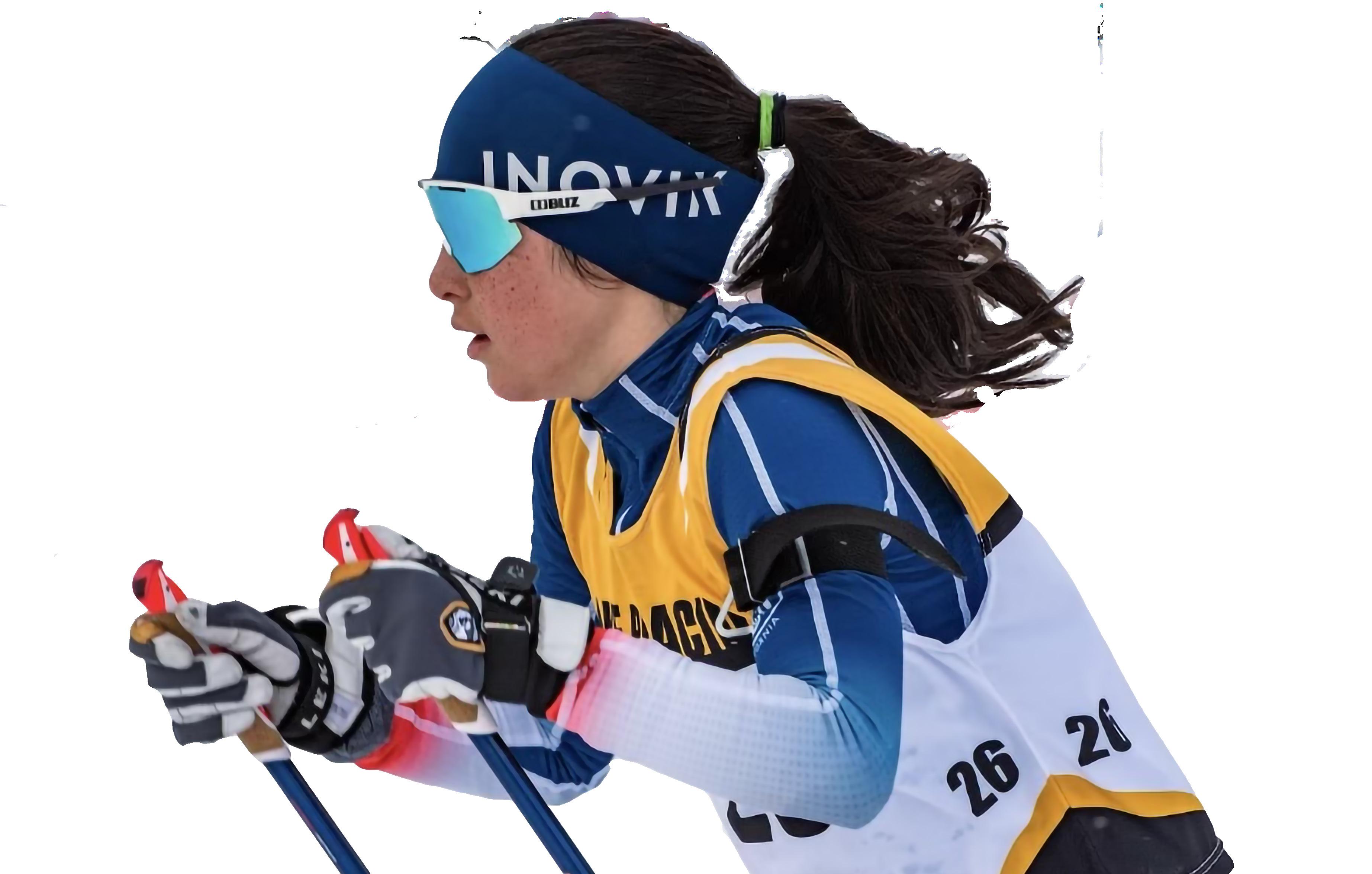

In the Scandinavian countries of Norway and Sweden, the yearly average temperature is 46 degrees Fahrenheit. The coldest ever recorded temperature is 63 degrees below zero. To put that in perspective, at 45 degrees Fahrenheit, human breath condenses. At 32 degrees,
skiing –– a criss-cross pattern of skiing on groomed tracks. In 1924 in France, biathlon appeared for the first time in the Winter Olympics. The race breakdown went as follows: a 20km skiing course (skied over five 4km laps) with four shots after each lap. The shoot-
and alternated prone (lying down), standing, prone, standing, prone, by lap, with a fixed time penalty added for each missed target. The athletes started in staggered time and the total penalty minutes were added at the end to their final time.
the Auburn Ski Club (ASC) is located in Soda Springs, California (a 15-minute drive west of Truckee) and offers biathlon teams a place to train –– alongside the more typical activities of alpine and nordic skiing and snowboarding.
The ASC biathlon team (composed of individuals of all genders and ages) is coached by Dan Warren, who has been a part of the sport for over 20 years, but only started coaching biathlon for ASC this past year. In his younger years, he was primarily a downhill skier and worked as a Ski Patrol director in the Tahoe area. He also has a background in Nordic skiing and has participated in many such races. After retiring from his position on the Ski Patrol, he worked as head groomer for ASC and continued to race biathlons, both at the national level in the US, and internationally for the Masters Olympic Games. That is, until he took the job as head biathlon coach for the club.
“The reason I took the job is that I enjoy the comradery of the biathlon family,” Warren said. “Even at the world
Meghan Lemoine, a Paly sophomore, has the luck of being able to be part of the wonderful biathlon family of ASC. With a splash of freckles, a soft voice, and a polite demeanor, Lemoine seems like a typical 15-year-old high-schooler. But Megan’s participation in biathlon sets her apart. In the winter, while thousands of other Palo Altans take I-80 across Donner pass and onto the slopes of Tahoe for alpine skiing and hot chocolate, Lemoine is different. She sets out on the slopes with Fischer skis strapped to her feet and a .22 caliber änschutz rifle slung over her shoulder.
Unlike better-known sports like basketball and football, biathlon is not offered at high schools in the U.S. and is a far less popular recreational winter sport than your typical alpine skiing. Because of this lack of publicity, Lemoine fell in love with the sport not through her school, but partially through family influence and partially through serendipitous timing.

“My dad always really liked biathlon,” Lemoine said. “We started watching the [Biathlon] World Cup together and over the pandemic learned that there was a range near us.”
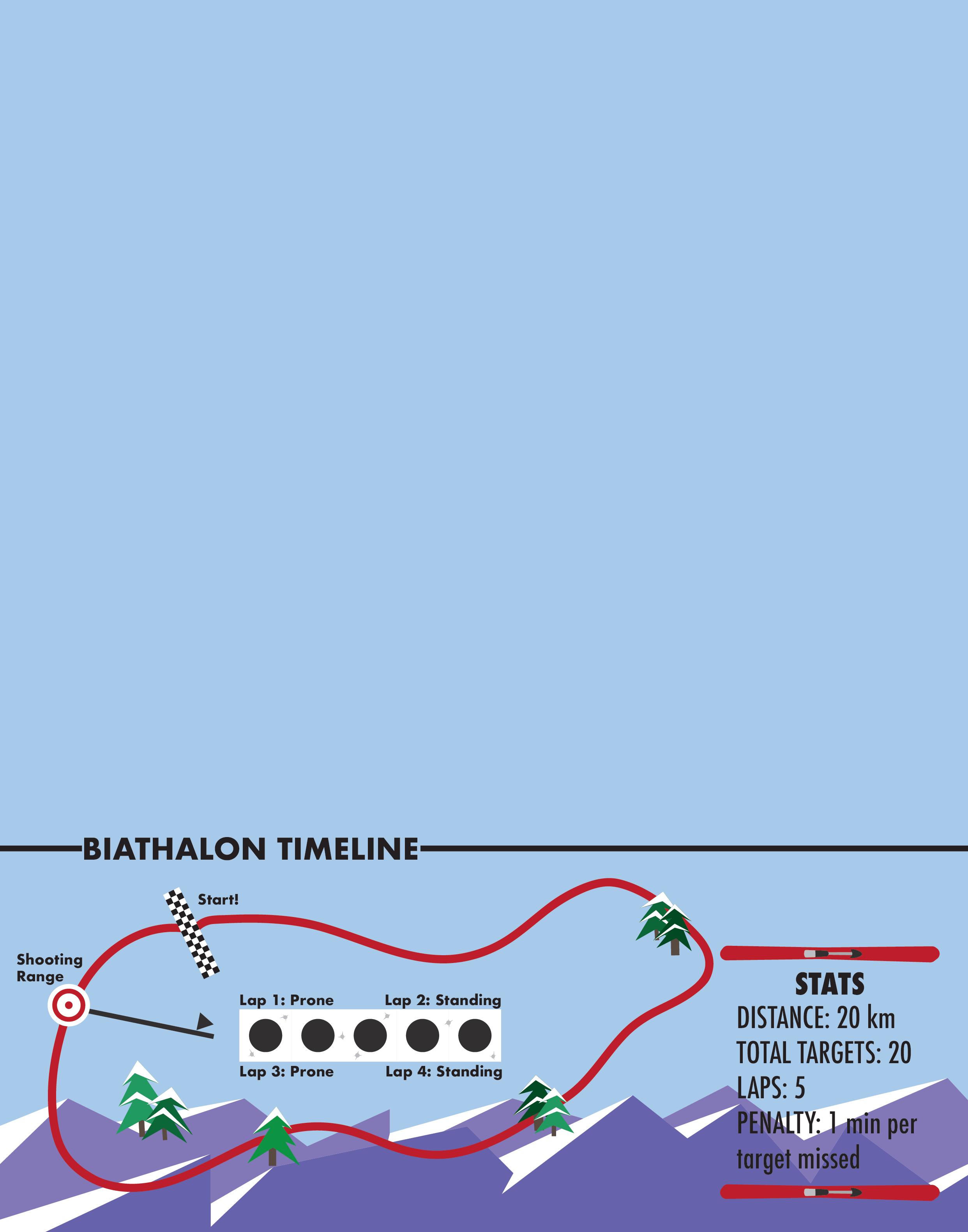
thermore, proper cross-country skiing areas are less common than downhill slopes. Lemoine feels fortunate to have discovered the ASC.
“It’s a very small team,” Lemoine said. “On the cross country skiing side there are quite a few girls my age but on the biathlon side I’m the only girl in my age group. There’s one other boy in my age group who comes consistently; it’s small.”
Warren notes that although the number of members on the team is small, biathlon is a growing sport in the US, especially for women.
and that extends down to our local club. I also enjoy seeing biathletes when they have successes and share in their excitement when they perform well.”
The “range” refers to the shooting course, a necessary aspect of biathlon. Due to strict gun and shooting range regulations within the U.S. and especially California, it is often difficult to find safe and well-maintained ranges to practice shooting. Fur-
“Women’s biathlon is the number one watched sport in Europe and the interest is growing a lot in the USA,” Warren said. “What is interesting with the ASC Biathlon group is that the majority are women over the age of 50. They won the team gold medal at the 2020 World Master games in Seefeld Austria”
So, despite its small size, the ASC adequately provides Lemoine with a physical

“Women’s biathlon is the number one watched sport in Europe and the interest is growing in the USA“
- Dan Warren
Photo Courtesey of Meagan Lemoine
location to train as well as the emotional support and advice of coaches. Based on the International Biathlon Union (IBU) standards, and according to the coach, the club is a unique training ground for aspiring biathletes.
“We are the only [biathlon course/ range] on the West Coast,” Warren said. “[It’s] at a very high altitude: 7,100’ (IBU limits ranges to 5,900’). We also receive more annual snow than any other range in the world (354”) [and] have the luxury of having 7 nordic ski areas [in Tahoe area] within a 45-minute drive of each other.”
Because two different complex components comprise the sport –– skiing and shooting –– each practice at the ASC looks a little different, and Warren uses the support of various coaches, all of incredible merit in the biathlon world, to provide her with what she needs.
“I have ski training coached by our Nordic coach, Gus Johnson,” Warren said. “Some of the others in Megan’s age group use coaches from Sugar Bowl academy and Tahoe City XC. I also use coaches Glenn Jobe (1980 olympic biathlete) Dave Eastwood (US Master gold
medalist) Carol Lyda (deceased husband was the US biathlon coach at the 28th Olympic games), [and] Jordan McElroy, former National Biathlon Team member. I am good at the big picture of range safety, maintenance, and general coaching, [but] I use a lot of resources to give all the athletes the best coaching available outside of US national team coaching.”
Lemoine trains with the ASC on weekends throughout the winter months and thoroughly enjoys the complexities and challenges each practice provides.
“For a biathlon practice, we set up the range first, and then zero our sites to make sure they are working for the conditions,” Lemoine said. “If it’s a precision

practice, then our coaches will work with us one-on-one with drills, but if it’s a more general practice it will be [ski] combos or intervals; we go on our own, ski around and then come in. The course is pretty hilly so the skiing is really fun but also really tiring. Also, we do mini shooting competitions and games that are really fun.”
Because biathlon is a winter sport, it is important that biathletes stay in shape during the offseason months, both in terms of cardiovascular health as well as in terms of skiing and shooting skills. Fortunately, Warren notes, there are many ways to do this.
“Cross country running, hiking in the mountains (a favorite for Europe world cup level biathletes), cycling, both road and or Mountain bike, core work, and roller skiing,” Warren said.
Roller skiing is typical of biathletes because it provides technical skiing practice as well as cardio. Roller skiing is when skis have wheels instead of metal edges and are used on hard surfaces like paved streets. It emulates the crisscross action of biathlon skiing. During the biathlon offseason, Lemoine mixes this with other forms of cardio.
“When I’m [in Palo Alto] I’m running and roller skiing around the neighborhood,” Lemoine said.


Despite the benefits of roller skiing, Warren points out that, unlike keeping up shooting technique, keeping up skiing technique with roller skis is not imperative during the offseason.
“There are some high-level biathletes who roller ski very little but keep their cardiovascular system in condition by using other training but all [biathletes]
“There is a lot on the line at a trials event. People can spend their entire career fighting for a start at the Olympic Games and still fail”
30 | VIKING MAGAZINE | vikingsportsmag.com
Photo Courtesey of Joanne Reid
shoot in the off-season,” Warren said. “Summer is where we concentrate on shooting drills, position in prone and standing, concentration and rifle set up and fit for the individual athlete.”
While some go to shooting ranges to practice firing in the various positions with live rounds, others, like Lemoine, “dry fire,” usually at home. This simulates the discharge of a gun but without the danger of bullets, and helps to maintain some of the skills required for accurate marksmanship.
“Dry fire drills are very important to strengthen the entire muscular system to keep the rifle as quiet as possible while you just stress your whole body by skiing hard,” Warren said. “Standing dry fire drills are vital for success during the season. There is a noticeable difference between those who practice and those who do not. Dry fire also makes getting into
position to shoot an intuitive process, although it may look easy it can take several years for some athletes to have a process from skiing with a rifle on their back to a safe, stable shooting position in a matter of seconds.”
The importance of keeping in shape technically and physically ensures that come winter season, athletes are ready to race. Lemoine, through ASC, is able to race multiple times a year.
“I started competing two years ago,”
Lemoine said. “Most of what I do are just among the club members [but] last year I went to Nationals.”
Lemoine is following in the footsteps of former ASCbiathlete Joanne Reid, who graduated from Gunn High School in 2009. Reid competed at the 2018 Olympics, where she raced the sprint and individual, placing 86th and 22nd, respectively. Four years later, she competed in the 2022 Winter Olympics, adding the pursuit course to her spirit and individual events. She finished 29th, 34th, and 57th, in those respective events.


“It’s a very small team. On the biathlon side
I’m the only girl in my age group”
- Megan Lemoine (‘25)
@vikingsportsmag | DECEMBER 2022 | 31
Photo Courtesey of Joanne Reid
Reid started out as a nordic skier, not a biathlete. In high school at Gunn, she ran cross country and track and skied on the weekends in the winter.
“People thought I was constantly on downhill ski vacations, and my friends would ask why I could never hang out on weekends,” Reid said. “I was training high hours as a nordic skier in high school. I would leave during my class-free periods and train (roller skiing) in Los Altos Hills and come back to class afterward. Then I would go to running practice after school.”
This commitment to Nordic skiing meant Reid often had to sacrifice other aspects of her life.
“[Training] took all of my time,” Reid said. “I lost some friendships to this, so the ones that lasted are more meaningful to me.”
During her senior year of high school, Reid was recruited to the University of Colorado at Boulder for cross-country skiing on full scholarship. She went on to win an individual NCAA title in 2013, and graduated that same year with a degree in applied mathematics. Growing up in snow-free Palo Alto, the recruitment for skiing as well as the NCAA win came as a shock to many, both abroad and at home.
“When I tell people I grew up four hours from [the] snow they look at me like I have two heads,” Reid said. “Even funnier, my student counselor didn’t believe me when I said I was being recruit-
ed –– in her defense, who recruits skiers from places with no snow? –– and told me if I did not have a colored envelope, I probably wasn’t [being recruited]. I did not get a colored envelope. I did get a scholarship.”

Biathlon is currently not an NCAA sport, primarily because of the safety concerns that arise with shooting. This means that high school biathletes, like Lemoine, will not have the opportunity to compete collegiately. It also means that the US biathlon team often has to recruit elite cross-country college skiers that are willing to switch to biathlon in order to fill their roster. This was the case for Reid.
As a member of Team USA, Reid went to two rounds of Olympic Trials as well as two Olympic Games, in 2018 and 2022. According to Reid, these experiences were intensely competitive and pressurized. And although rewarding in the end, they are also memorable for other reasons.
“I would not describe [the Olympic Trials] as any type of fun,” Reid said. “There is a lot on the line at a trials event. People can spend their entire career fighting for a start at the Olympic Games and still fail. I had friends and teammates who failed, and I think no less of them than those who wore the Stars and Stripes with me.”
From both respective Olympic Trials, Reid went on to compete in the Olympics. Unlike the balmy temperatures in which Summer Olympians compete, Winter Olympians often have to execute their best performances, and have their best races, in the face of harsh, cold con-
ditions. Reid remembers this vividly in 2018 at Pyeongchang and again in Beijing in 2022.
“Both [olympic]] venues were brutally, ferociously cold and savagely windy,” Reid said. “That’s a tough situation for a precision marksmanship sport — the wind [changes] bullet trajectories, dressing for cold affects mobility in shooting positions, and freezing a trigger finger mid-competition almost certainly means misses. It was a struggle to stay warm out there [in] both places.”

Beyond the difficult weather conditions, the Beijing Olympics were particularly memorable because they occurred during the Covid-19 pandemic, creating a strange, surreal environment for the athletes.
“Covid made it bizarre in so many ways — we took a covid test every single day, without exception,” Reid said. “There were no spectators allowed, we couldn’t leave the closed loop of the village. Every single volunteer and worker in the village was head to toe in disposable one-piece outfits, complete with booties, gloves, masks, and face shields. It had the bizarre effect of making everyone just look otherworldly — coupled with the extreme cold, isolation, and ban on visitors and spectators, we may as well have been on the moon.”
Reid notes that harsh weather and Covid complications notwithstanding, competing in biathlon at the Olympics was a mentally challenging and spiritually rewarding experience.
“The eye of the world turning towards you for a month of difficult competitions is never easy, especially in a sport that has such a major mental component,” Reid said. “It’s easy to get derailed by nerves, but that difficulty is what makes it both fun for us to do, and exciting to watch.”
To younger biathletes like Lemoine,
“If I am going to encourage someone to start a sport, I would like to be proud of it, and I am absolutely proud of biathlon.”
32 | VIKING MAGAZINE | vikingsportsmag.com
- Joanne Reid
Reid is an inspirational figure for biathlon within the US. Lemoine looks up to her not just because they both trained and competed for ASC, and grew up in the same town, but because of how far Reid has come in her career.
“She had a great college skiing career,” Lemoine said. “Now she is an Olympic Biathlete and a World Cup Biathlete even though she didn’t necessarily have as much time on snow as other people did.”
Biathlon has existed for over three centuries. It has expanded its reach and is growing in popularity in many countries. It has grown from one event –– the individual –– to now include many variations, most notably relays. It is leading the frontier in terms of equal pay and viewership across genders and pushing the boundaries of human limits.
The sport puts athletes in snow-white expanses, in harsh, windy, cold condi-

tions. Biathlon forces athletes to calm their breathing, still their heartbeat, and hit a pea-sized target fifty meters away. It combines an intense physical event with an incredibly mentally difficult skill. In the eyes of Lemoine and Reid, there is no better sport for people to do.
“If I am going to encourage someone to start a sport, I would like to be proud of it,” Reid said. “And I am absolutely proud of biathlon.”
1. LEARN HOW TO SKATE SKI
4. LEARN SAFE RANGE PRACTICES
2. DEVELOP A GOOD STANCE
5. START USING AN AIR RIFLE AT THE RANGE
3. TAKE A BEGINNER PROGRAM AT A BIATHALON RANGE
6. ENROLL IN OPEN RANGE SESSIONS OR FULL PROGRAMS

@vikingsportsmag | DECEMBER 2022 | 33
Countless athletes around the country dream of playing sports at college or professionally. Since 1906, when the NCAA — the entity that controls college sports —, was created, these have been mutually exclusive dreams. In 2021, however, things changed.
Since its inception 116 years ago, collegiate athletes have always been subject to the NCAA’s “principle of amateurism,” which says that student-athletes partaking in collegiate sports should be motivated by the educational opportunities provided and not be exploited by larger commercial enterprises.
However, while college athletes have been expected to play for their love and passion for their sport, the NCAA brings in over one billion in profit annually. Until 2021, collegiate athletes could receive scholarships from schools but could not be directly paid to play.
“I think it’s great that collegiate athletes can now make money from sponsorships and commercials,” junior cross-country runner Allie Difede said. “Some athletes are outstanding and bring a lot of recognition and spectators for their school’s sport, and they should be compensated for that since it brings more money for the school.”
Despite many who agree with Difede, others do not like the idea of college athletes being able to profit from their tal-

ent. The discussion surrounding paying for collegiate athletics has been controversial for several years but reached its peak in 2021 with NCAA v. Alston. The rare sports-related Supreme Court case revolved around the compensation of collegiate athletes and the profitability of colleges and universities from sports.
In July 2021, the Supreme Court ruled against the NCAA in a 9-0 decision that collegiate athletes should be able to benefit from name, image, and likeness; NIL. However, it upheld the lower court’s finding that the NCAA violated the antitrust law by restricting education-related benefits (essentially saying that the NCAA held a pseudo-monopoly on college athletes). In more colloquial terms, the ruling meant that famous athletes could use their “name, image, and likeness” for ad deals, sponsorships, and even Youtube channels or TV shows.
While this decision still does not allow college athletes to receive money through direct payments (i.e., the pay-
August 8, 2014
to-play that happens in pro sports), it has allowed athletes to profit from endorsement deals, commercials, social media, and other monetary activities outside of school.
“I think NIL does enough for athletes because it impacts athletes depending on how prioritized they are,” Paly varsity football player Ikinasio Tupou (24’) said.
Many also argue that NIL provides college athletes with much-needed funds.
Previously, college coaches and NCAA executives earned
more than 6 to 7 figures. Schools like the University of Louisiana made more than $45 million from sports revenue (ticket sales, TV viewership deals, etc.) but only paid out $400,000 annually in scholarships to their athletes. 85% of college athletes live below the poverty line and owe thousands in tuition. Those who support NIL point out that these individuals should get money from sports, not the NCAA or the coaches.
The NCAA requires all athletes to have
September 27, 2019

NIL
NIL Timeline
The first year of name, image, and likeness rapidly changed college sports; now what?
of an
being
for
NIL
in violation of antitrust laws
by JASON HU and TAKUMI WEIMANN
In O’Bannon v. NCAA, the Federal District Court ruled that the NCAA’s prohibition
athlete
paid
their
was
California’s Governor Gavin Newsom signs the Fair Pay to Play Act making California the first state to allow student athletes to make money off NIL
“Athletes bring a lot of recognition for their school’s sport and they should be compensated for that.”
Allie Difede (‘24)
health insurance to play. The NCAA does not provide these athletes with health insurance and reserves the right to refuse to pay for an athlete’s treatment in case of an injury. This policy places poor athletes at a significant disadvantage. If an athlete from a poor background cannot pay for insurance, they cannot play.
Despite those arguments supporting the passing of NIL, many oppose it for various reasons, one being that playing in college should be because of the love of a sport. Football Coach Jason Fung partially agrees, noting that NIL takes something away from the sport itself.
“It’s social media; how much can you get your name out there? So it’s a lot of components,” Coach Fung said. “It’s not just [about] playing football anymore, which isn’t always the best.”
Other critics are against it because athletes should focus their attention on their academics — arguing that scholarships and a good education are adequate compensation.
Most college athletes do not make it to professional basketball or football and instead go into the real world for work. Only 1.2% of college athletes go pro in basketball or football. The NCAA argues that athletes who participate in collegiate sports have a higher graduation rate (86% in division 1, 71% in division 2, and 87% in division 3. Compared to
regular students, who have a graduation rate of 63.8%, NCAA athletes are 20% more likely to graduate college.), the college education is their payment for their play. Furthermore, they say, NIL will result in less money going towards scholarships and less funding for college sports because the cash will instead flow into the pockets of top-tier athletes.
Matteo Lisi, a junior volleyball player, understands the NCAA’s argument but supports the recent decision on NIL because it benefits skilled collegiate athletes.
“I think college athletes getting a scholarship and good education is a good enough compensation,” Lisi said. “However, athletes should also be able to get money from endorsements and deals off their name without the NCAA intervening.”
Furthermore, critics of NIL point out that it has perverted the college recruitment process by creating a gray area between NIL deals and direct pay-to-play. Through NIL deals with school-affiliated businesses, schools can “pay” prospective athletes to attend their school under the pretense that it is an “endorsement deal.”

High-profile boosters are rolling out five to seven-figure NIL deals to prospects and athletes from other programs to attract them into collectives, exclusive, and high-priced clubs.

The companies and the school’s collectives share a common goal: fill college rosters with top athletes with influen-

tial NIL deals. Additionally, collectives change how college recruiting works, making it pay to play with officials claiming that boosters run the entire recruitment process through money. Many of these deals bypass current NCAA guidelines, and all eyes are on the NCAA to create new policies that reduce the current gray area where these boosters operate.
“It’s a marketing ploy, so they have the money to do it,” Fung said. “You can’t fault them.”
Despite these contrasting views, the reality is that NIL has changed the lives of many. An estimated three out of every four NCAA athletes have made some form of NIL deal in the past year, be it from smaller ad deals, YouTube video commercial money, or an Instagram post. The average NCAA athlete has made $3,711 from NIL deals, and some top athletes have even made six-figure deals.
The NCAA aims to crack down on those above “gray areas” of booster involvement in the recruiting process. However, many believe that the NCAA may face backlash in doing so. So, for now, NIL allows college athletes to earn money and benefit from their name, image, and likeness.
“I think booster involvement could be potentially dangerous,” Lisi said. “The main priority of NIL should be to pay collegiate athletes what they deserve.”

In NCAA v. Alston, the Supreme Court upheld the district court’s ruling that NCAA violated antitrust laws with a 9-0 ruling
Eight months following the NIL Supreme Court Decision, the NCAA said it will inspect how recruiting and other areas of NCAA sports are being affected by NIL.
“It’s social media, how much can you get your name out there. It’s not just playing football anymore.”
Jason Fung
Ikinasio Tupou lines up in his stance before the whistle
Photo by Karen Hickey
BURNOUT: When More Isn’t Better


Paly has been recognized for its astounding athletes and continues to recognize them. To what extent is the
local club team the following week. Start ing at four years old, senior Finley Craig began her athletic journey.
With any sport comes the draining three-hour practices full of endless drills and mind-numbing laps, countless amounts of tournaments, Craig felt her love for the sport beginning to end. However, during freshman year, Craig was presented with a new sport to try: Cross Country. She found liberation in the freedom and new-ness of running, and it being “just for fun”. What wasn’t enjoyable, though, was trying to balance the time between being a multisport athlete and a full time student. After sacrificing many family vacations and hangouts with friends the two-year struggle between soccer and her cross country
that had been a part of her identity for the entirety of her childhood.
Craig came to realize that the time and energy she put into her soccer career was a huge part of her life, and with it gone, she would have to rediscover who she really was.
Most athletes begin their sport at a young age, encouraged by their parents or joining friends in a new activity. The sport grows with them as they age
and who they are.
Often, athletes feel pressured to stay in a sport even when they no longer find enjoyment, face injuries, or find themselves in a toxic environment. Burnout is much more common than many think, but when an individual makes the hard decision to quit their sport, what happens to their identity?
How do they discover themselves as a different person independent of athletics?
To begin, athletic burnout must be de-
Burnout forms slowly over time and is made up of several different components. Generally speaking, athletic burnout is a response to the stress of the continued demands of a sport without the opportunity for physical and mental recovery.

“I as a coach need to understand all the pressures that are on [athletes]. ”
36 | VIKING MAGAZINE | vikingsportsmag.com
- Coach Jeff Lamere
Although this definition covers the basics, the explanation of burnout that is more true to life is a little different. The factors of burnout tend to relate back to one idea: identity. The pressure to perform well to uphold the self-image of “an athlete,” the over-emphasis on one sport to be “that athlete,” and the devastation of injuries because they stop people from being “the athlete” they want to be. Burnout is about identity. Sports have an incredibly large impact on high schoolers. Our culture revolves around them, in implicit and explicit ways: from attending games, playing in them, talking about them, to wearing clothes from sports team. Many younger athletes dream of going on to collegiate athletics, or even of competing at the professional level. They feel that letting go of a sport will drastically affect their future for the worse by limiting options for college, jobs, or even fundamentally shifting who they are aside from giving up on something that had been a part of them for so long.

Paly students already struggle with external expectations with respect to academics, from family, friends, teachers, and society. Ideally, athletics are a place to relax, have fun, and be yourself. However, the external pressure to perform well from coaches, teammates and parents, as well as the internal pressure to perform well, often creates more stress than fun––leaving athletes with little motivation to continue to play and compete at a sport.
Senior Brooke Threlkheld, a former competitive club swimmer, now runs cross-country in the fall and swims for the more-relaxed school swim team in the spring. Threlkheld started swimming when she was less than a year old, and had been competing since the age of seven. Her love for the sport began to falter when the external pressures of club swimming––the emphasis on winning medals and placing first––made the practices less enjoyable.
“When I started swimming, it was a really chill team, focused on friendship and

just trying your best,’’ Threlkheld said. “[But] then the team shifted into being focused on times and being the best. I still swim for Paly [because] it goes back to the root of being a team, and I felt like club swimming is more individually focused.”
Coaches and parents have a big role when it comes to easing the external pressure to perform at a high level. Encouraging athletes to take breaks to recover mentally and physically when needed is an important part of the sport.
Paly varsity boys basketball coach and former collegiate coach, Jeff LaMere, speaks on the importance of taking care of his athletes.
“When I coach the biggest thing for me is the health
“They need to be in a great headspace to be ready to im prove. I as a coach need to understand all the pressures that are on them. Espe cially at Paly, we have student athletes trying to be the best at everything they do.”
According to a study by UC Health, rest and recovery are “critical for an athlete’s physiological and psychological well-be ing.” When athletes step away it allows them to fully recover and help prevent burnout.
“We need to be able to manage their work loads –– many student athletes only play one sport and are playing that sport year round,” LaMere said. “One of the biggest pieces of anything is having rest, there is this idea that the more you work the more you get better, there are so many more benefits to having a good balance of rest and work.”
In addition to the external pres sure from coaches or parents to do well, there is internal pressure from the athlete themselves. Some are so focused on being the perfect star athlete––perfect stats, perfect performance, perfect times–– that the as pect of individual
and team growth is lost. Constantly striving for this perfection will not only lead to dissatisfaction, but also often in turn will negatively harm mental and physcial health, causing burnout.
Junior Mary Henderson, a competitive swimmer and water polo player, began swimming at age eight and playing water polo at age twelve. Henderson has first hand experienced the effects of burnout, and has thought about quitting both sports because of her internal expecations of her performance.
“I definitely do get burnt out playing my sports simply because of the sheer amount of time I put into both of them,” Henderson said. “It is difficult for me mainly because of how mentally draining it feels after putting in hours of training and practice, just to have a bad game.”
Finding ways to help prevent athlete burnout can be extremely effective. Henderson explains how her burnout was caused by her internal mindset.
“I found that associating your self-worth with athletic performance is a sure method to deteriorate mental health,” Hen
@vikingsportsmag | DECEMBER 2022 | 37
85.8% OF PALY STUDENT ATHLETES HAVE FELT BURNED OUT IN THEIR SPORT
MAIN CAUSES OF BURNOUT IN PALY ATHLETES?




position, differing team and individual expectations, or unhappiness with practice schedule, can shift the amount athletes enjoy what they are doing, making the sport more mentally draining and less fun.

Paly junior Gali Nirpaz used to dive competitively for the Stanford Diving Club. She made the difficult decision to quit the team her sophomore year because of an array of factors, mostly based on the environment she found herself in when competing at a higher level.
“When sophomore year hit I was put on a higher team with a coach that did not like me,” Nirpaz said. “I was put in a group that I did not like at all. I was away
tioned, sports are designed as a place to have fun and relax. It is a way for athletes to block out the stress of school, work, and real life. However, when the athletic environment becomes loses it’s excite ment, it is no longer a mental escape. This leads to add ed stress and often burn out. LaMere reflects on how coach es perceive this.
“If there
point where I was completely breaking down every practice,” Nirpaz said.
“I stopped pushing myself as much as I
However, coaches are there to help. Communication between athletes and coaches is key. Talking through taking a break, or shifting practices to make the sport more enjoyable again to the athlete can exponentially improve the mental well-being of an athelte. As LaMere points
“I got to test things out and now I have a better understanding of who I actually am rather
38 | VIKING MAGAZINE | vikingsportsmag.com
ten lead to burnout.


Senior Rachel North played soccer her entire life, competing at the club level for Palo Alto Soccer Club and had full intentions of playing at the collegiate level. After playing on broken bones that were not given proper time to heal for months, North now needed bone removal surgeries on both feet. The two surgeries, done a year apart from one another, left North with persistent pain and inability to continue to play, forcing her to quit playing the sport.
“I wish that this wasn’t the outcome, but [the surgery] was a forced decision,” North said. “I really miss [soccer], though it is something I can be thankful to look back on.”
Spending all or most of one’s younger years playing exclusively one sport can lead to injuries or burnout. When this happens, athletes are often left con fused and lost; not knowing what to do next. After years of intense physical ac tivity, It can be hard to find other ways of getting exercise or finding that spe cial group of people that one would find within a team. North, after losing soccer due to injuries, found weight training as a passionate re placement.
“The lack of

letes, North and Kasanin includ ed, continue to play while hurt, worsening the inital injuiry. Fur thermore, the recovery process can be frustrating and draining through hours of physical ther apy while watching teammates and friends continue to play.
“I had to go through a lot of physical therapy, which I did not take seriously, so my gait did not heal and the doctor said that I couldn’t play soccer for the season,” Kasanin said. “This was frustrating but also my fault.”
Athletes tend to be experts at pushing themselevs, always going faster, always working harder and wanting more. What is so challaning, however, is the knowl edge that the only way to get better is to take time off and let the body heal. Sometimes this means people continue to play regardless of injuries, further and more seriously hurting themselves or becoming overly frustrated by the recovery time and quit playing the sport all
“This injury mainly led to a lot of frustration, because I just kept wanting to go out and play, and each time I tried [to play], it would still hurt,” Kasanin said. “Because my gait had been messed up for so
factors one way or another, it is inevita ble that people will need breaks, even though not all athletes leave their sport.

Craig, went through a lot of tough decisions when she decided to quit soccer to continue running. She spent years debating whether or not to quit soccer until all the factors lined up.
Although she felt like her soccer team’s condition was very toxic, Craig’s coach was very supportive through the whole process. After months of choosing not to quit soccer, the final push to quit was when Craig had to receive a double foot surgery to fix an injury. She found that there wasn’t enough time or energy for her to balance participating in both soccer and running.
After many long discussions with her parents and coach, Craig’s decision had no impact on her relationship with the coach and her old team mates.
“I think people need to realize that [they’re] allowed to leave,” Craig said.

“I think people need to realize that [they’re] allowed to leave.
People should allow themselves to quit a sport and not worry about being judged for it.”
@vikingsportsmag | DECEMBER 2022 | 39
- Finley Craig ‘23
since she was a toddler, she felt lost. After all, losing a sport is like losing a part of yourself. She had to find new things that she enjoyed and not just do things because she was good at them.
“With running, it allowed me to like find things that I’m passionate about,” Threlkheld said, “I got to test things out and now I have a like a better understanding of who I actually am rather than like who I thought I was.”
Although Threlkeld had regrets at first but found herself in a new community that was supportive and different from the competitiveness she was wanting to get away from.
Similarly, Craig found a community that she adored, and discovered a sport that she was very good at and loved. From being apart of a very competitive and toxic environment she found this change refreshing.
“I wasn’t as social because I didn’t really have a lot of good friends on the soccer team, it was basically just the ones who went to the school,” Craig said. “Now after I quit, I’ve branched out with my friends through all the grade levels. And we do so many team bonding things as
a team and I enjoy going to practice so I think overall, I’m just a lot happier.”
Feeling initial regret or sadness was a common theme among athletes who ended up quitting their sport. However, they often found themselves in a new light and discovered what they really enjoy doing.
Other athletes pick up completely unrelated sports to their previous one. Kasanin, for example, took a long time to recover from his injury. When he came out on the other side of it, he explored some of his other interests and found hobbies were less painful than playing soccer on an injured foot.
“I decided to pick up tennis and later surfing.” Kasanin said, “I now teach surfing every weekend in Half Moon Bay, which has been a great experience and something that I wouldn’t have picked up if I was still playing soccer.”
After finding new things to enjoy, these athletes discover a new sense of self and feel that they become a better version of themselves.
Mental health issues have become a really prominent issue in today’s society. The effects of having good mental health
is shown to be very beneficial to overall quality of life. Schools across the country are beginning to prioritize mental health over anything else by giving students access to wellness needs. However, not many athletes have had the same experience. It is much harder for athletes to cope with sports-related mental health issues, due to the lack of knowledge and research, along with the stigma surrounding the idea.
Many athletes across the world are effected by burnout, whether they realize it or not. There are many ways that cause burnout, whether it be internal pressures, external pressures, bad environments, injuries, and much more. The line is drawn once a sport becomes mentally overwhelming, rather than a mental escape. The mental and physical stress that comes with it is something that should be addressed more.
“For any of these students if they are student athelets or not, go talk to someone, reach out to a coach or a teacher,” LaMere said. “If you stop doing it doesn’t mean that you’ve failed. Sometimes change can be great.”
Thoughts from Paly Athletes on Preventing Burnout:
“More patience from myself as an athlete and accepting I won’t always be at the top of my game, letting myself take time for improvement to kick in after making a major change to my technique.”
“Taking breaks and decreasing the amount of time I have spent swimming has significantly decreased the amount of pressure by myself to do well, since I don’t care as much anymore, and has made the sport fun again because I was doing it ‘just because.’”
“Your value is not tied to your sport.”
“Coaches should do better to understand that as much as we love the game we play, we have so many things to do. Being a senior is tough while playing a fall sport, doing college applications is the most stressful thing during high school. I wish they knew that missing some type from practice to do school work is okay.”
“My team had a lot of hierarchal issues, people thought they were better than each other. It put a lot of pressure on me to be really good. I think it could have been fixed if there was more leadership from the captains and coaches to get us all on the same page.”
“Athletics should be a safe enviornment where the pressures of the rest of one’s life don’t affect them.”
40 | VIKING MAGAZINE | vikingsportsmag.com
Paly Kicks
text by CAROLINE MOSTOFIZADEH and TYLER WONG design by CAMERON TOLAND
Stylish and functional footwear is a cruical part of any athlete’s season. Here are 14 Paly Athletes’ first choice of footwear.
KATH StEIN
Nike Mercurial Superfly 8 Elite FG


Senior Kath Stein plays soccer and wears the Nike Mercurial Superfly 8 Elite FG for her cleats. “I prioritize both comfort and appearance when buying cleats because I wear these shoes everyday and use them for a long time,” Stein said. “Shoe choice affects my performance; they enhance my play.”
Ikinasio Tupou
Under Armour Spotlight Lux MC LE Mid
Junior Ikinasio Tupou is a three star recruit, playing left tackle on the Paly football team. Tupou wears the Under Armour Men’s Spotlight Lux MC LE Mid cleats. “These shoes are very special to me because I got them from an exclusive camp sponsored by Under Armour,” Tupou said.
Alexa Pineda Nike Air Zoom Infinity Tour NEXT%
Alexa Pineda is a junior on the varsity girls golf team. Her favorite shoe for golfing are the Nike Air Zoom Infinity Tour NEXT%. “I chose [this shoe] because it helps me stabilize and not slip while I play,” Pineda said. “[The] Nike ones are comfortable, waterproof, and help me not slip.”

RYAN KIM
Nike Zoom Victory Waffle 5
Sophomore Ryan Kim uses Nike Zoom victory XC 5 waffle for cross country running. CIF Regulations prohibit runners from wearing spikes. This means that runner’s shoes must have adequate traction while also not weighing the runner down. “I really like the Nike Victory because they were light, but also had a bit of cushioning which felt really nice on my feet,” Kim said.
 Photo from nike.com
Photo from nike.com
Photo from nike.com
Photo from nike.com
Photo from nike.com
Photo from nike.com
@vikingsportsmag | DECEMBER 2022 | 41
Photo from underarmour.com
NikeCourt React Vapor NXT

Erin Li is a varsity girls tennis player and she chooses her shoes based on comfort and performance. She exclusively wears the Nike tennis shoes as they are comfortable and she likes to match with friends on the team. “When the [shoes] are new, they feel uncomfortable and I can’t run with them,” Li said. “[But] Once they are worn in, they feel amazing.”
PHILIP SANTIAGO
Asics Jordan Burroughs Elite
Contrary to common belief, wrestlers use shoes as opposed to competing barefoot. Senior wrestler Philip Santiago uses Asics Jordan burrows. “The shoes are light but have good traction on the matt,” Santiago said. “Also, they are black and gold which goes with everything and looks cool.”
ALEXIS CHIU
Nike PG 5
Alexis Chiu is a senior on the Badminton team and wears customized Paul George 5’s, which are technically designed for basketball, but work for her sport. “They have good ankle support and traction,” Chiu said. “Even though they are basketball shoes, I used them for volleyball and decided to keep them for badminton because they work equally as well.”
EVIE KRAMER
Nike Cosmic Unity 2 Basketball Shoes


Evie Kramer is a member of the Paly Volleyball team. She wears the Nike Cosmic Unity 2 Basketball shoes on the court. “I wanted something with good ankle support that also adds as much height as possible because it is benefi cial to be tall in volleyball,” Kramer said. “I love the white because it matches my club jersey as well as the player’s jersey.”
RUSS FILTER
Nike Lunar Vapor Ultrafly Elite 2

Senior Russ Filter’s favorite pair of baseball cleats are the Nike Lunar Vapor Ultrafly Elites. “I chose these cleats because they are super light and not bulky at all,” Filter said. “ I am big on look good feel good, feel good play good mentality so I definitely pay attention to how my cleats look.”

ERIN LI
Photo from asics.com
42 | VIKING MAGAZINE | vikingsportsmag.com
Photo from nike.com
DELANEY BALL
New Balence VELO v3 Metal Spikes
Senior Delaney Ball uses New Balence VELO v3 Metal spikes to play softball. “I like the clean look of white cleats, and the New Balence cleats have great traction playing in the outfield,” Ball said. “Unlike other cleats, the spikes don’t wear down quickly so my cleats last me through a full season.”
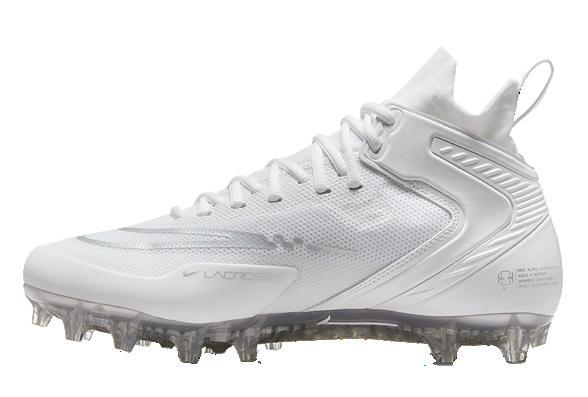
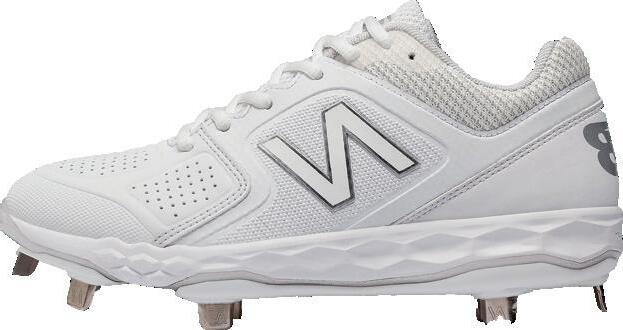
ALDEN BACKSTRAND
Arena Powerfins PR
Although swimmers are required by regulation to race with nothing on their feet, they often use equipment during practice for technique or enhanced speed. Fins go on the feet to help during kick sets. Senior Alden Backstrand wears Arena Powerfins PR, in the color hot pink. “These short fins by arena are epic and help me go super fast which is why they are the best!” Backstrand said.
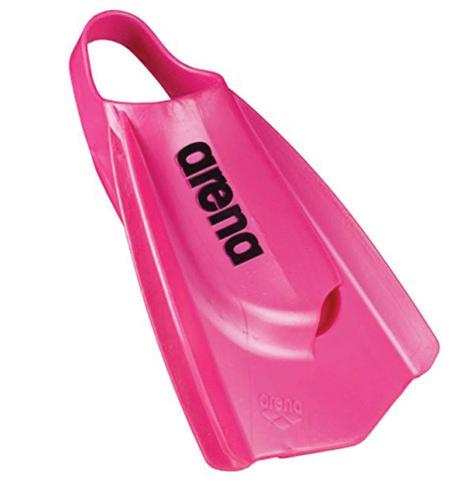
ASHER FRIEDMAN
Nike Alpha Hurache 8
Senior Asher Friedman uses the Nike Alpha Hurache 8 for his lacrosse games. “They are light and flexible while still being supportive,” Friedman said. “I also broke my last cleats (Ohio state cleats) right before a tournament and had no problems [in] these new ones.”
Kellyn Scheel Adidas Adipower Hockey

Senior Kellyn Scheel is on the girls varsity field hockey team and believes Adidas are the best brand for field hockey shoes. “They are designed for field hockey so they have support and protection from the ball since it’s common to get hit in the foot,” Scheel said.
Alaap Nair
Nike Kyrie Low 4 EP 1 World

1 People
Junior Basketball player Alaap Nair uses Kyrie 4 lows to play basketball. “I care about how my shoes look, I think it has a big part to do with confidence,” Nair said. “Shoe choice 100% affects performance. Depending on one’s play style, certain shoes work better than others, which is why I wear Kyries.”
Photo from nike.com
Photo from adidas.com
Photo from newbalenceteam.com
@vikingsportsmag | DECEMBER 2022 | 43
Photo from arenasport.com
VIKING TRIES
the team that scores the highest amount of points. But, have you ever heard of a sport where scoring lower is better?
Golf is one of the only sports where this phenomena is true. Despite being unique in this sense, Golf has been around for hundreds of years. People began playing the game in the 15th century, starting in Scotland. In the 500 years since then, the game has evolved and modernized.
This issue, the Viking staff partook in this historic sport and put their skills to the test in a fun competition.
The competition breaks down as follows: driving, target, and putting. Our participants included seniors Jackson Martin, Cameron Toland, Ivan Ijzerman, and juniors Trey Collins and Tyler Wong. Different people had different thoughts on who would win.
“I usually go to the range about at least once a week with my friends just to play for fun,” Martin said. “I thought going into the competition being able to show off some of the skills I learned would be pretty fun. I was pretty confident in my ability to perform well.”
Toland thought otherwise. She be-
lieved that she was the most qualified to win because of her previous experience with the sport.
“I had instruction in golf before and compared to all of my competition, I am probably the only one with real experience and instruction,” Toland said. “But I'm the only girl participating in this so the boys are definitely going to be able to beat me in strength. I won’t out-drive anyone but I think I'm a better golfer than all of them.”
Beginning with the driving segment, participants would grab the club with the biggest head –– known in golf as “the driver” ––and try to hit the ball as far as possible. The horizontal distance of the ball would be the measurement of who wins. This is known as the “carry distance” in golf. Participants had three tries to hit the ball as far as they could, then points were distributed accordingly.

Toland’s prediction of the boys “outdriving her” came true. Wong won this segment with a 210 yard carry, outdriving everybody by at least 30 yards. In professional golfing, the average drive carry from the past PGA tour season is 284 yards and the world record for the
longest drive in the pros is 476 yards. The discrepancy between the best Viking carry and said numbers is wide, speaking to the strength and skill needed to compete at the highest level in golf. Despite Martin’s less than stellar performance ––he only hit it 180 yards –– he still liked the event.
“This was an enjoyable event for me,” Martin said. “I loved to see the ball soar off the tee.”
The second portion of the competition was the “target segment.”
Participants had three tries to hit the ball on a target located in the middle of the driving range, 40 yards away. In colloquial, non-golf speak, the driving range is a huge land of grass surrounded by tall nets where golfers can practice their golf shots. Usually at the range, you hit off a fake grass “golf mat” that is similar to grass. The mat is more convenient and more environmentally friendly than real grass; real grass can shred and needs constant watering as well as maintenance.
Viking members could use any club of their choice to try and hit the target, but
photos and text by CALEB WONG design by IVAN IJZERMAN and CALEB WONG
44 | VIKING MAGAZINE | vikingsportsmag.com
Five
members of Viking Magazine take on one of the most challenging sports the world has to offer.
were advised to choose wisely: different club angles allow a golfer to control the distance and spin of the ball. Collins and Ijzerman chose to use the sand wedge, while Toland chose a pitching wedge. Wong and Martin went a completely different direction and chose a higher angled club, lob wedge.

There are four different types of wedges: the pitching, gap, sand, and lob. Wedges are used for long drives. The smaller the angle of the club, the farther the ball travels, but the larger the angle of the club, the more spin the ball has. Generally, a pitching wedge is angled between 43-47 from the vertical, making it the lowest degree wedge. The gap wedge follows, typically angled between 48-52 degrees from the vertical then the sand wedge, angled between 54-56 degrees from the vertical. The highest angled club wedge is the lob wedge, angled between 58-62 degrees from the vertical. Participants would be awarded five points for hitting the target on their first try, four points for their second, three for
their third, and zero if they never hit it.
Despite the seeming ease of this challenge, almost nobody was able to do it. Only Toland –– who nailed it on her last try –– was able to hit the target.
“I thought it was going to be easy, because the target was so close and seemed fairly big,” Wong said. “This wasn’t the case, and my confidence waned as I missed the target each of the three times.”
For the final segment of the competition, participants headed to the putting green. Here they would hit the ball from three different spots, with the goal of getting in into the hole. For putting, wedges are not used because they rough up the grass and cause divots and mud chunks. Instead, tradition demands putting with, well, a “putter.” That is, unless you are Happy Gilmore and prefer the hockey stick.
The scores from this part were based on how many putts it took to get the ball in the hole. The smaller the number, the more points given. After the first hole, scores were close: Wong and Toland
were tied. However, after putting from other spots, Toland pulled ahead, winning with an overall score of 7 putts for all three spots.
“Putting was by far the hardest part in the competition,” Collins said. “It wasn’t easy compared to the other parts as I couldn’t use my strength, which had helped me previously.”
After the three segments of the competition were over, overall scores were calculated. It was very close but Toland ultimately took home the crown of Viking’s best golfer, winning with a final score of 11 points: 3 points from the drive, 3 points from the target, and 5 points from the putting.
“It feels great to be able to win,“ she said. “This was the only Viking Tries that I had a chance of winning and I proved myself right.”
After playing golf for an afternoon, the Viking staff agrees that the sport is much more fun than they had previously thought, and highly encourages those who haven’t, to try it out for themselves.
“Golf is a really fun sport that I hope many people do discover if they haven’t yet,“ Wong said. “There is no limit to when you stop playing this sport as you can always keep going.”
Final
@vikingsportsmag | DECEMBER 2022 | 45
Viking MeMber DriVing Distance target challenge Putting
score
 Jackson Martin
trey collins
caMeron tolanD
trey collins
Jackson Martin
trey collins
caMeron tolanD
trey collins
46 | VIKING MAGAZINE | vikingsportsmag.com
baylanDs golF course
The CCS DilemMa: How Strict is too Strict?
The CCS DilemMa: How Strict is too Strict?
by JJ STOEN design by GRACE LI
Paly athletes, and most high school athletes in general, participate in club sports along with their high school counterparts. This gives them two unique opportunities to improve and play at a high level. Both are fun and competitive, but they have some drastic differences.
The differences provide advantages for both. From what I have observed and experienced, club sports oftentimes offer a higher level of intensity and competition, but require a greater commitment. This commitment includes, but is not limited to, longer and more frequent practices, extended team travel, and multi-day tournaments. On the other hand, high school sports tend to offer competition of a different intensity. As opposed to the ultra pressurized events of club sports, high-school sports provide the competitive intensity of racing or playing for one’s school. From an outside perspective, if athletes can participate in both, they get a seamless blend of both types of compe- tition.
Central Coast Section (CCS), is Paly’s sports division within the California In terscholastic Federation (CIF). Unfortu nately, CCS currently has a rule where student-athletes are not allowed to compete for their club team during the high school season. Some supporters of this argue that participating in both will overwork the athlete, and add unfair coaching advantage for club athletes, and lessen the interconnectedness of the high school team. As a swimmer, I have experienced this first-hand. In order for high school swimmers to compete in high school meets, the swimmers must race as “unattached” at club meets, meaning their times cannot count toward their clubs. If this rule is broken, athletes can be disqualified from CCS competition. This affects the high-school coach because athletes may be less likely to participate in high-school sports because of this. It also affects club coaches: their athletes cannot compete or practice. I hear from my club coaches and teammates that their practices are basically a ghost town during the spring season.

Great.
In additon to the baseline struggle of determining when the high school season starts and club season ends, as well as putting athletes in the middle, these regulations hurt the athletes in other ways. Club practices are oftentimes the practices where athletes improve the most. For example, an AAU basketball player may have a much higher level of training at their AAU practices than they would at their high school practices, because the coach to athlete ratio is higher. As a Paly swimmer,
I am fortunate to not worry about the training and coaching level; Paly swimming is one of the most competitive teams in the nation. However, other athletes may worry about this. What can we do to fix these problems? I think we should get rid of the rule or at least modify it to be less harsh. Unattaching then reattaching for meets, as well as having to juggle club and high-school coach’s goals is often challenging. Additionally, although I love spending time with my Paly teammates, it does make me sad to become separated from my club during those months. CCS needs to rethink their rules and adapt them to the contemporary era. They need to change the regulation so they best benefit the athlete. They need to shift the guidelines so that athletes can compete simultaneously in club and high school sports.

@vikingsportsmag | DECEMBER 2022 | 47 THE FINAL WORD
Images from CIF and Arthur Balva
WITH JJ STOEN
PALO ALTO UNIFIED SCHOOL DISTRICT
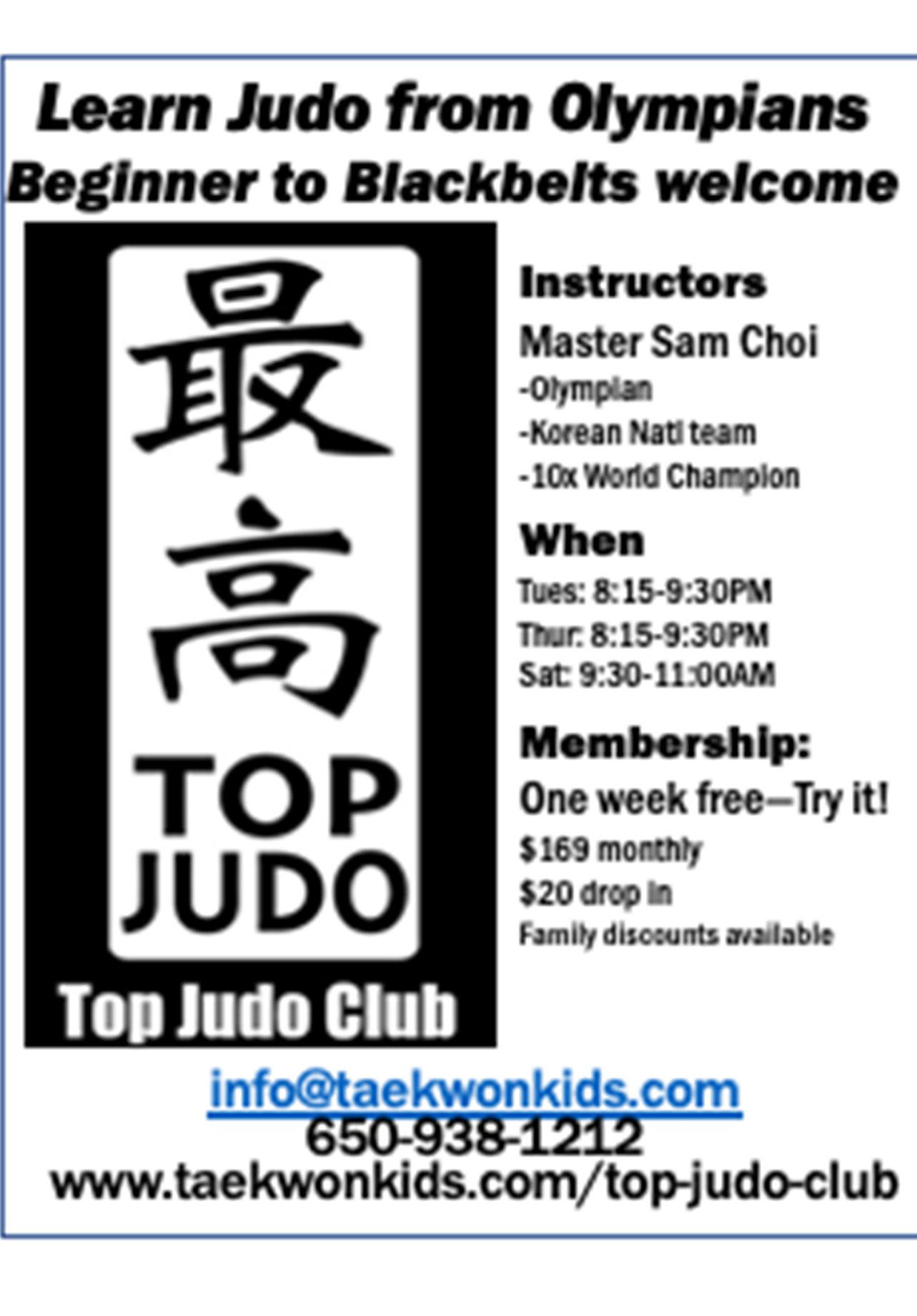
PALO ALTO HIGH SCHOOL
50 EMBARCADERO ROAD
PALO ALTO, CALIFORNIA 94301



Non-profit Org. U.S. POSTAGE PAID PALO ALTO, CA Permit #44
vikingsportsmag.com






















 Photo by Caleb Wong
Photo by Caleb Wong


 Photo by Caleb Wong
Photo by Caleb Wong

















 KELLYN SCHEEL SAMANTHA LEE JEREMIAH MADRIGAL
KINGA CZAJKOWSKA JULIEN CHOW
KELLYN SCHEEL SAMANTHA LEE JEREMIAH MADRIGAL
KINGA CZAJKOWSKA JULIEN CHOW















 -Will Hagan (‘25)
-Will Hagan (‘25)


































 photo courtesy of Karen Hickey, Malcon Slaney, and Allyson Lee
photo courtesy of Karen Hickey, Malcon Slaney, and Allyson Lee















































 Photo from nike.com
Photo from nike.com
Photo from nike.com
Photo from nike.com
Photo from nike.com
Photo from nike.com












 Jackson Martin
trey collins
caMeron tolanD
trey collins
Jackson Martin
trey collins
caMeron tolanD
trey collins


















